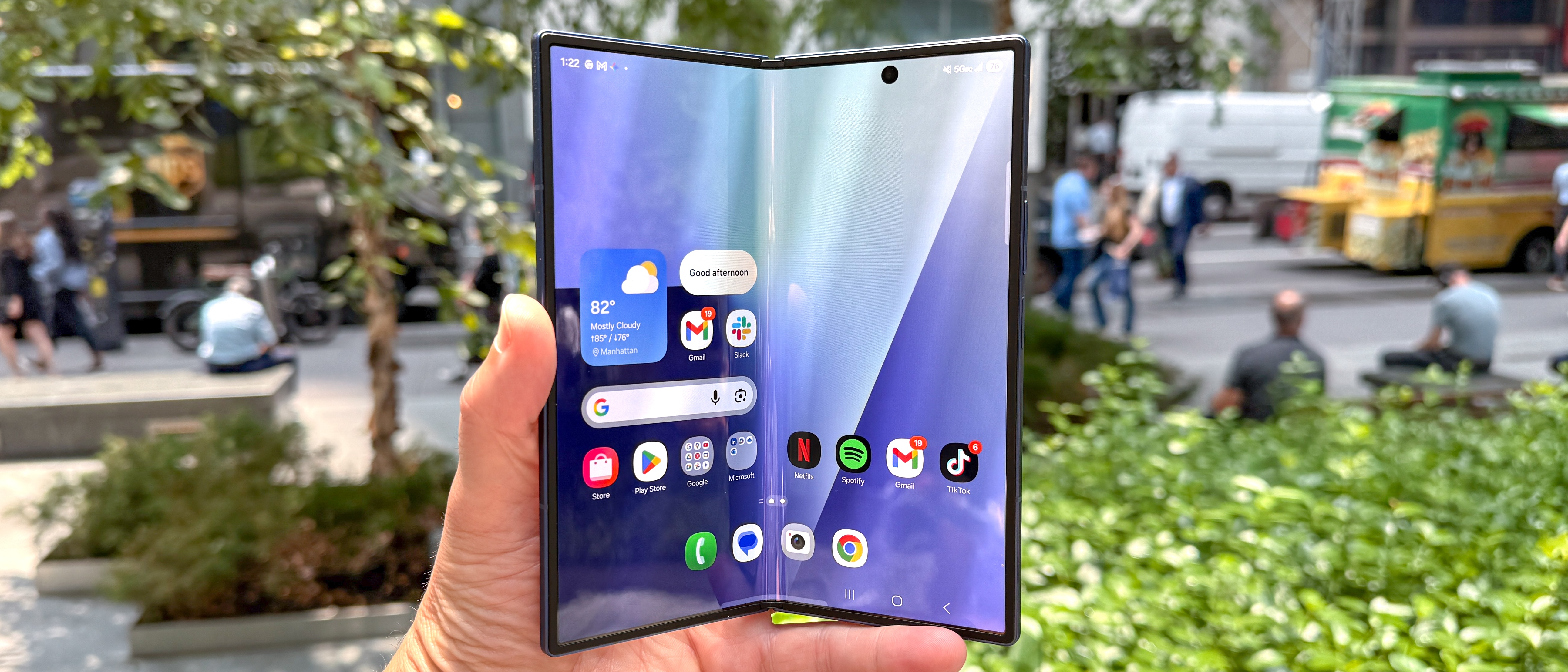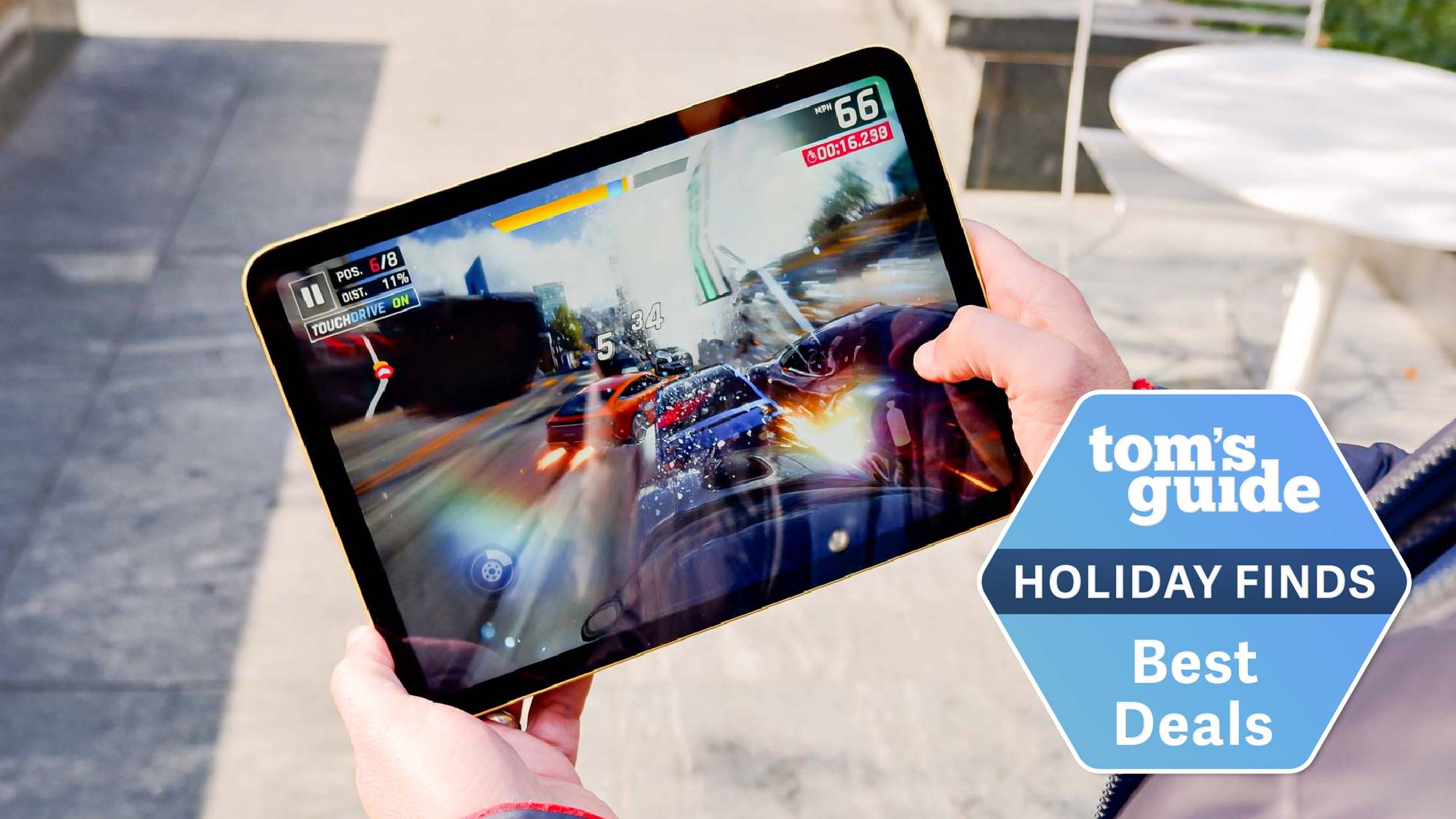Tom's Guide Verdict
The Samsung Galaxy Z Fold 7 feels like the holy grail of foldable phones. It’s super thin and light, so it feels like a regular phone in your pocket. And yet, the new Fold packs a bigger 8-inch display when opened. Samsung also upgraded the camera system, including a 200MP main shooter and an ultrawide camera that takes much better macros. And having Gemini Live always at the ready is a game changer. The $2,000 price is super expensive — and Samsung ditched the S Pen — but overall, this is the best foldable money can buy.
Pros
- +
Stunningly thin and light
- +
Bigger displays
- +
Much improved cameras
- +
AI features optimized for foldable use
- +
Great performance
Cons
- -
It’s $2,000
- -
Battery life could be better
- -
No S Pen support
Why you can trust Tom's Guide
It’s pretty rare that I’m so excited by a foldable phone that I’m tempted to buy it. This is one of those times.
The Galaxy Z Fold 7 is not yet another iterative upgrade. It is a huge leap forward in terms of design. It’s so thin and light I was shocked every time I picked it up for the first week of using the phone.
You’re no longer being penalized for wanting a phone and tablet in one device. In fact, the Fold 7 is lighter than both the iPhone 16 Pro Max and Galaxy S25 Ultra and also thinner than both of those phones when open.
That’s pretty frickin’ amazing for a foldable with a ginormous 8-inch display on the inside (one I can run three apps at once on), a 6.5-inch screen on the outside and a powerful new 200MP camera.
At the same time, Samsung is charging a staggering $2,000 for the Galaxy Z Fold 7 in the US, which is the second price hike on this model in two years. And the phone maker made some sacrifices to get the Fold this thin. Bye-bye S-Pen!
Now that I’ve been living with the Galaxy Z Fold 7, here’s my reasons to buy (and skip) in my full review. And check out the video above to see how it stacks up to the Galaxy S25 Ultra.
Galaxy Z Fold 7 Cheat Sheet
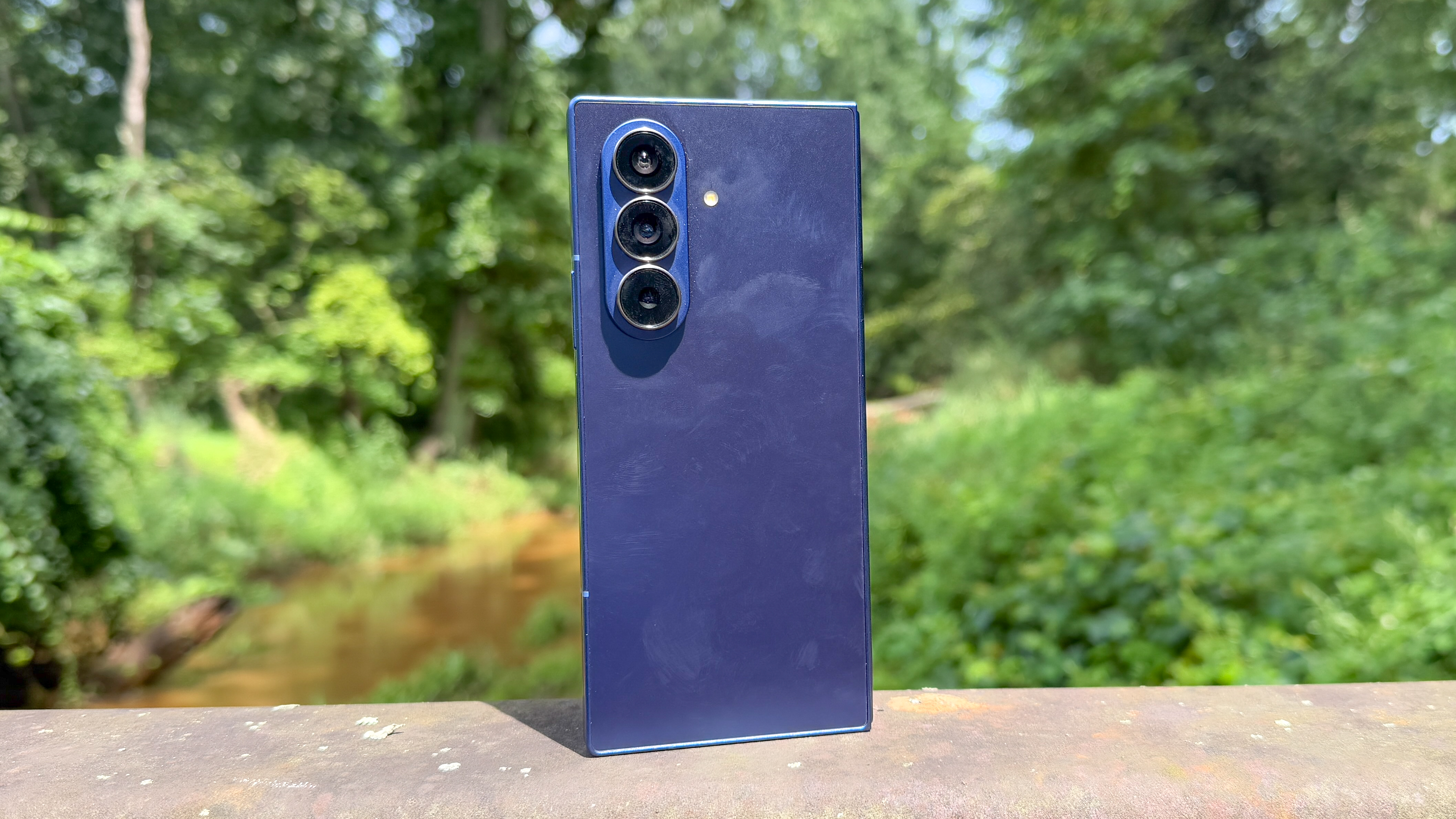
Who is this for? Power users looking for a tablet and phone in one device — without the usual foldable phone penalty of heft and bulk.
Get instant access to breaking news, the hottest reviews, great deals and helpful tips.
What does it cost? The Galaxy Z Fold 7 starts at $1,999 / £1,799 / AU$2,899. That’s a $100 price hike over the Galaxy Z Fold 6 in the U.S.
What do I like? The amazingly thin and light design, the larger displays, more advanced 200MP camera and the seamless integration of Gemini Live AI.
What do I not like? Other than the sticker shock of that price, the unsightly punch hole camera on the main display and the just-okay battery life. Some may miss the S Pen.
Samsung Galaxy Z Fold 7 review: Price & release date
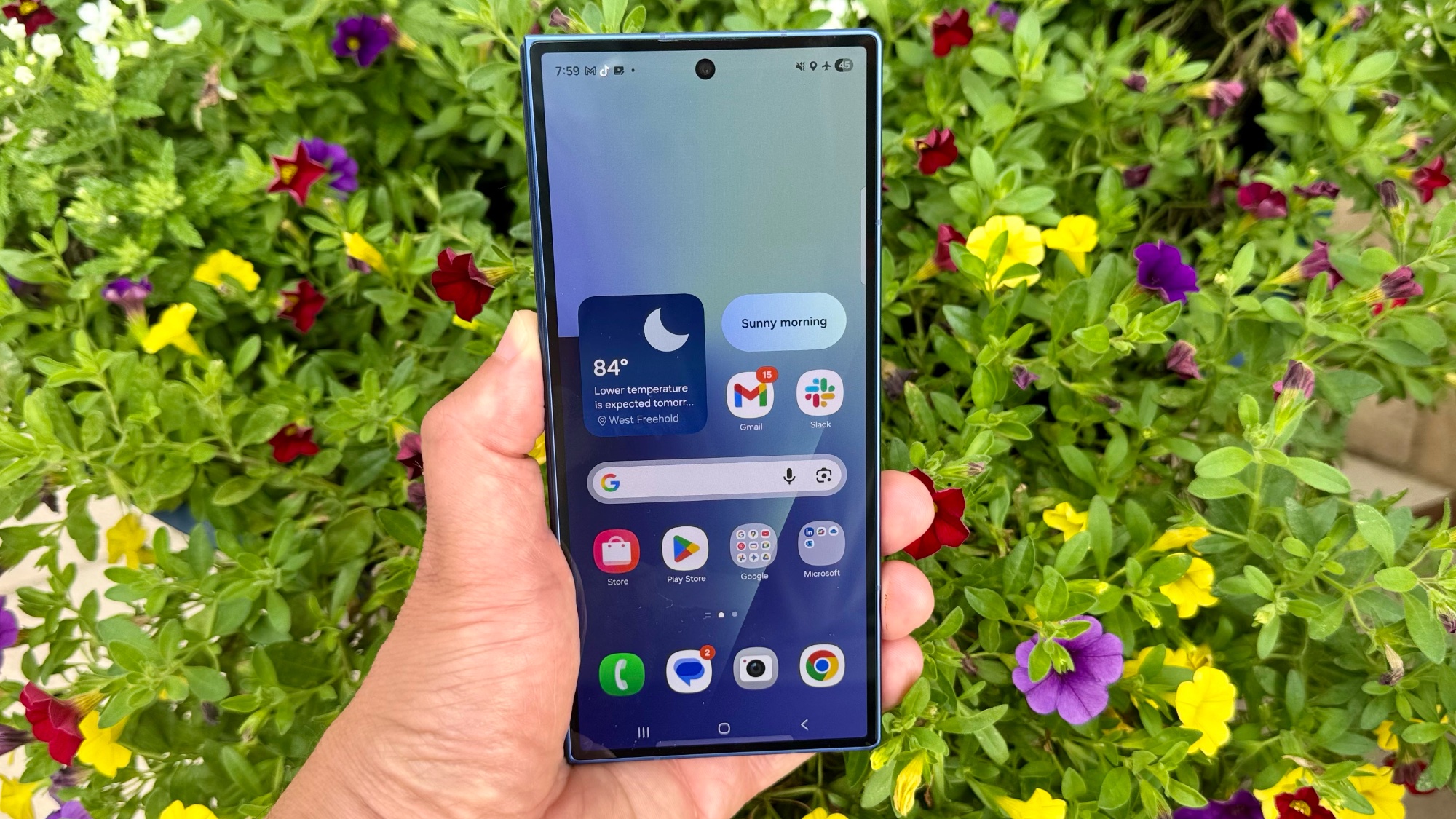
The Samsung Galaxy Z Fold 7 starts at $1,999 for 256GB of storage and 12GB of RAM. No, that’s not a typo. That’s $100 more than the Galaxy Z Fold 6 and the most expensive phone you can buy in the U.S.
The Fold 7 is more affordable in the U.K. and Australia, with prices starting at £1,799 / AU$2,899. Opting for the 512GB model will run you $2,119 / £1,899 / AU$3,099. Want 1TB? You’re looking at $2,419 / £2,149 / AU$3,549, but at least that includes a bump in RAM to 16GB.
Samsung Galaxy Z Fold 7 Specs
Price | From $1,999 / £1,799 / AU$2,899 |
Main display | 8 inches AMOLED (2184 x 1968, 1-120Hz) |
Cover display | 6.5 inches AMOLED (2520 x 1080, 1-120Hz) |
Chipset | Snapdragon 8 Elite |
RAM | 12GB (16GB for 1TB) |
Storage | 256GB/512GB/1TB |
Rear cameras | 200MP wide (f/1.7), 12MP ultra-wide (f/2.2), 10MP telephoto (f/2.4, 3x optical, 30x space zoom) |
Cover camera | 10MP (f/2.2) |
Main display camera | 10MP (f/2.2) |
Charging | 25W |
Battery | 4,400 mAh |
Dimensions | 158.4 x 72.8 x 8.9 mm (6.24 x 2.87 x 0.35 inches) folded, 143.2 x 158.4 x 4.2 mm (5.64 x 6.24 x 0.17 inches) unfolded |
Weight | 215 grams (7.5 ounces) |
IP Rating | IP48 |
Colors | Blue Shadow, Silver Shadow, Jet-black, Mint |
Samsung Galaxy Z Fold 7 review: Design
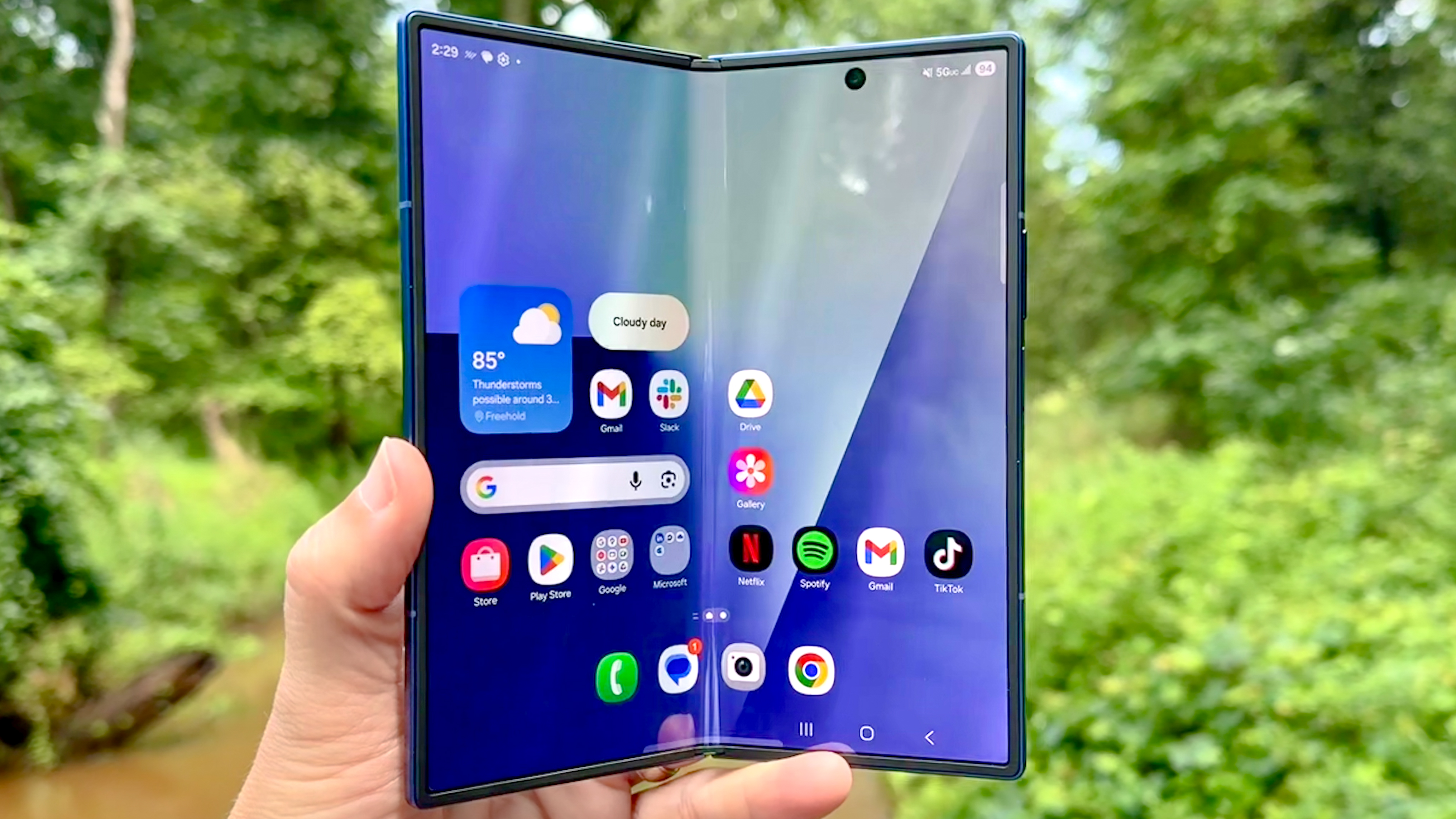
Let’s get something out of the way. The Galaxy Z Fold 7 may not be the thinnest and lightest book-style foldable in the world. But it is such a huge improvement over the Z Fold 6 that it feels like a totally new device.
Measuring 8.9mm thick unfolded and 4.2mm unfolded, the Z Fold 7 is 26% thinner than the Fold 6. And when I hold them side by side the contrast is dramatic. Seriously, it’s the difference between wanting to carry this phone in my front or back pocket and using a coat pocket or my bag.
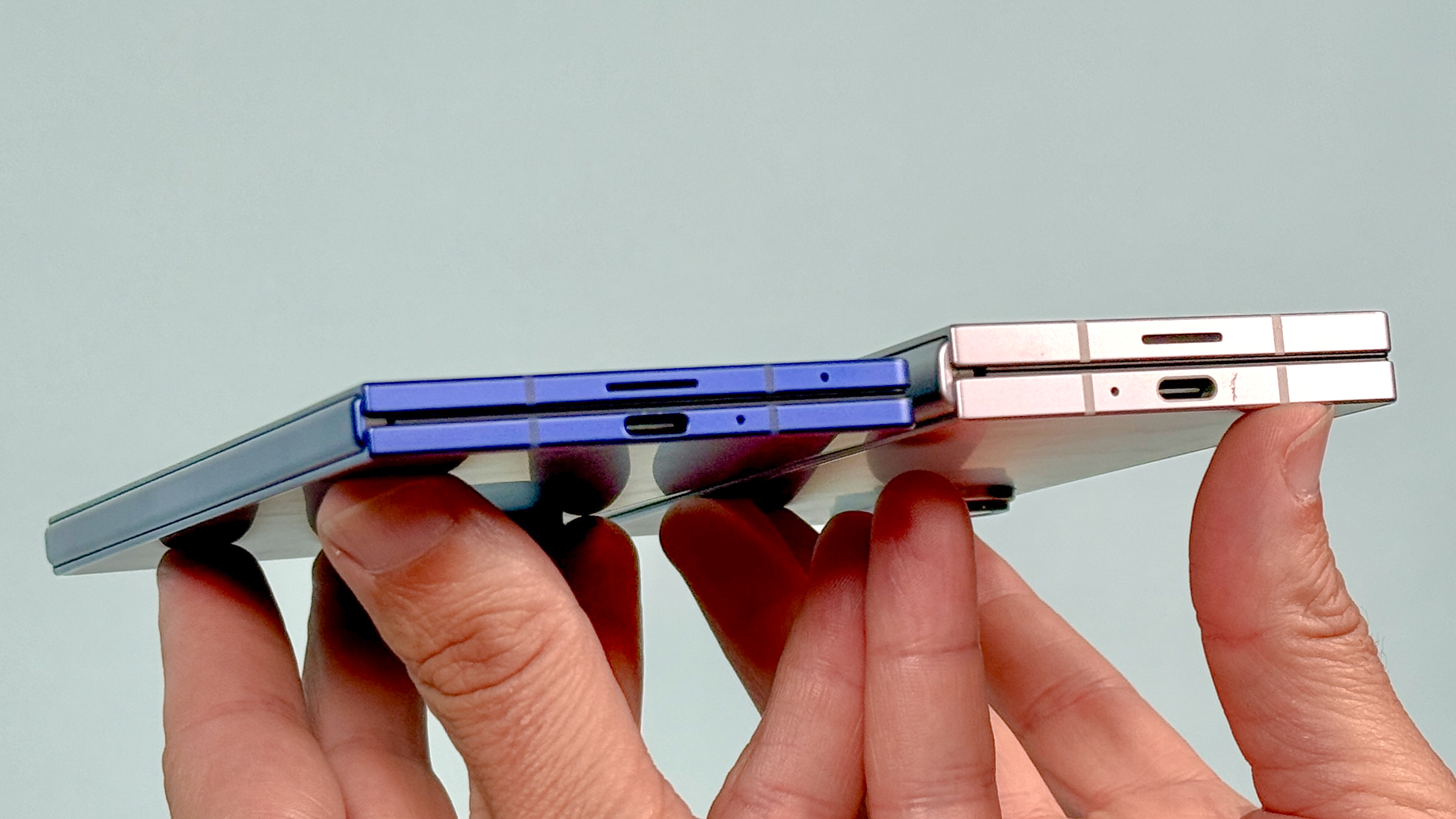
For those scoring at home, the Honor Magic V5 is reportedly 8.8mm thin when closed and 4.1mm when open, but that’s not a phone that’s available for sale in the U.S.
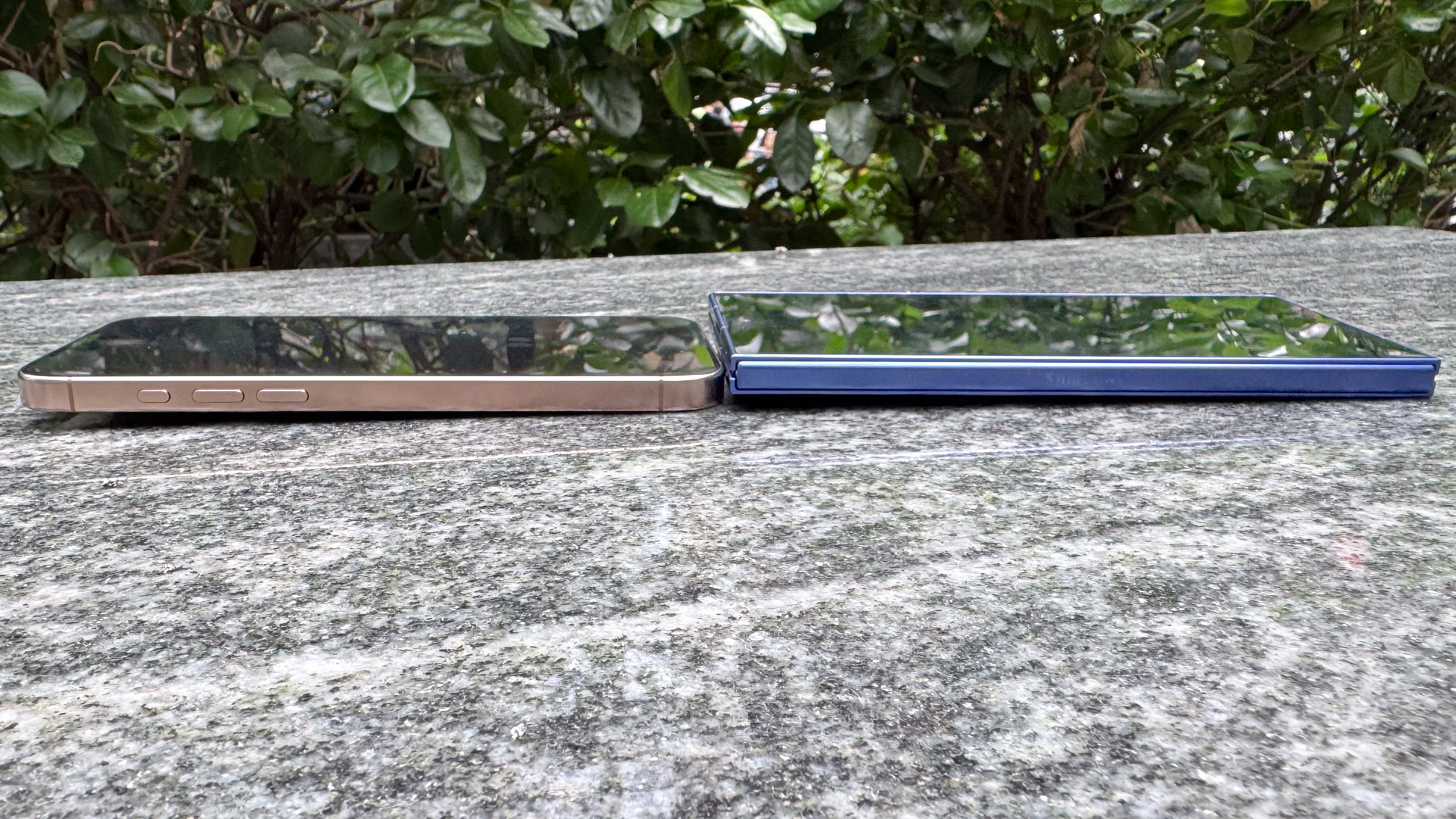
Samsung says it’s made the Fold 7 more durable, too, thanks to a new Armor FlexHinge that more evenly distributes stress, an advanced Armor Aluminum in the frame and hinge that increases strength and a main display that’s thinner but stronger.
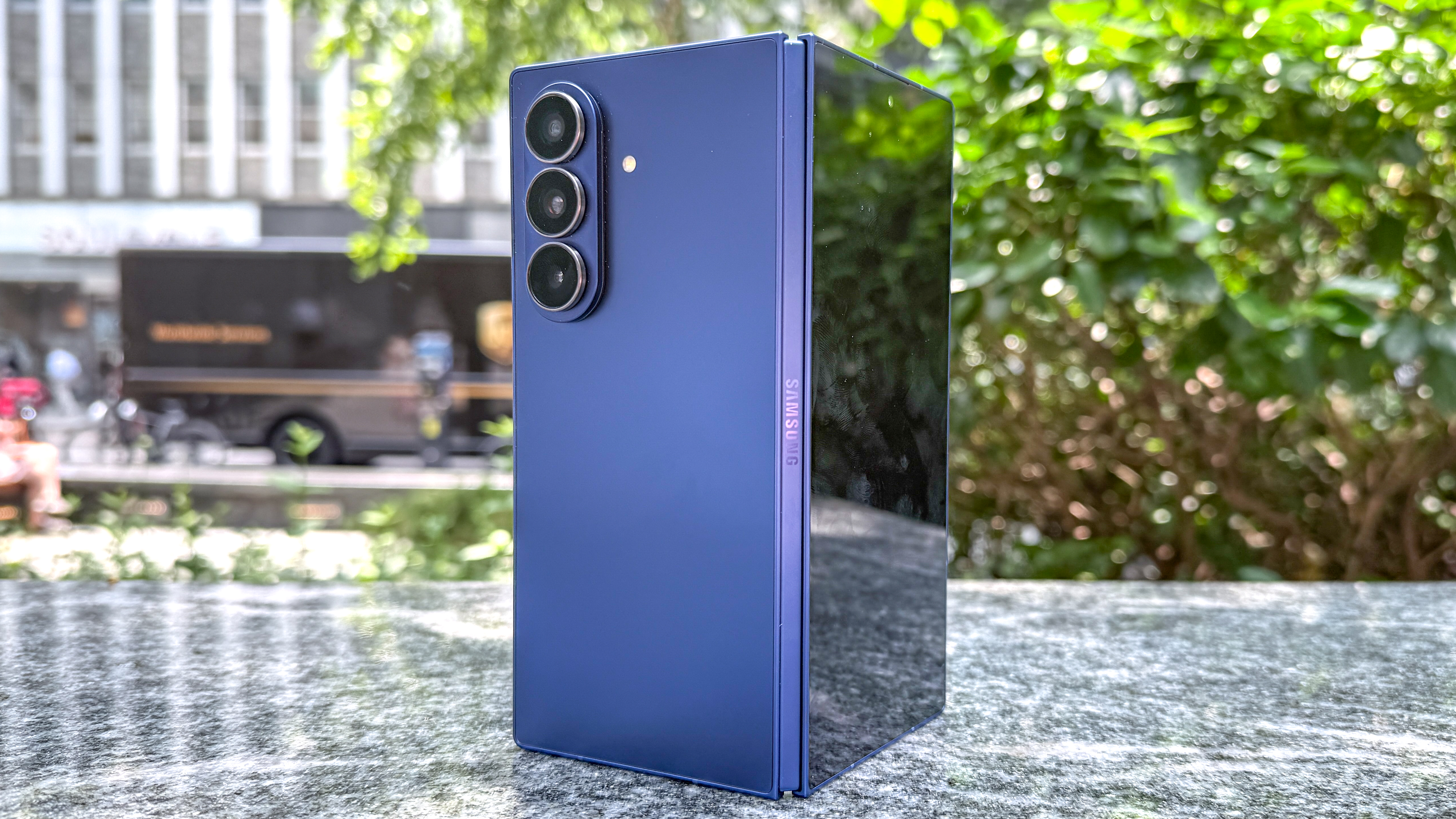
During my time with the Galaxy Z Fold 7, it felt pretty durable despite being so thin. And I like how the hinge barely protrudes when closed. But note that this foldable is just IP48 rated once more, meaning it’s water resistant but not dust resistant. I won’t be taking the Fold to the beach.
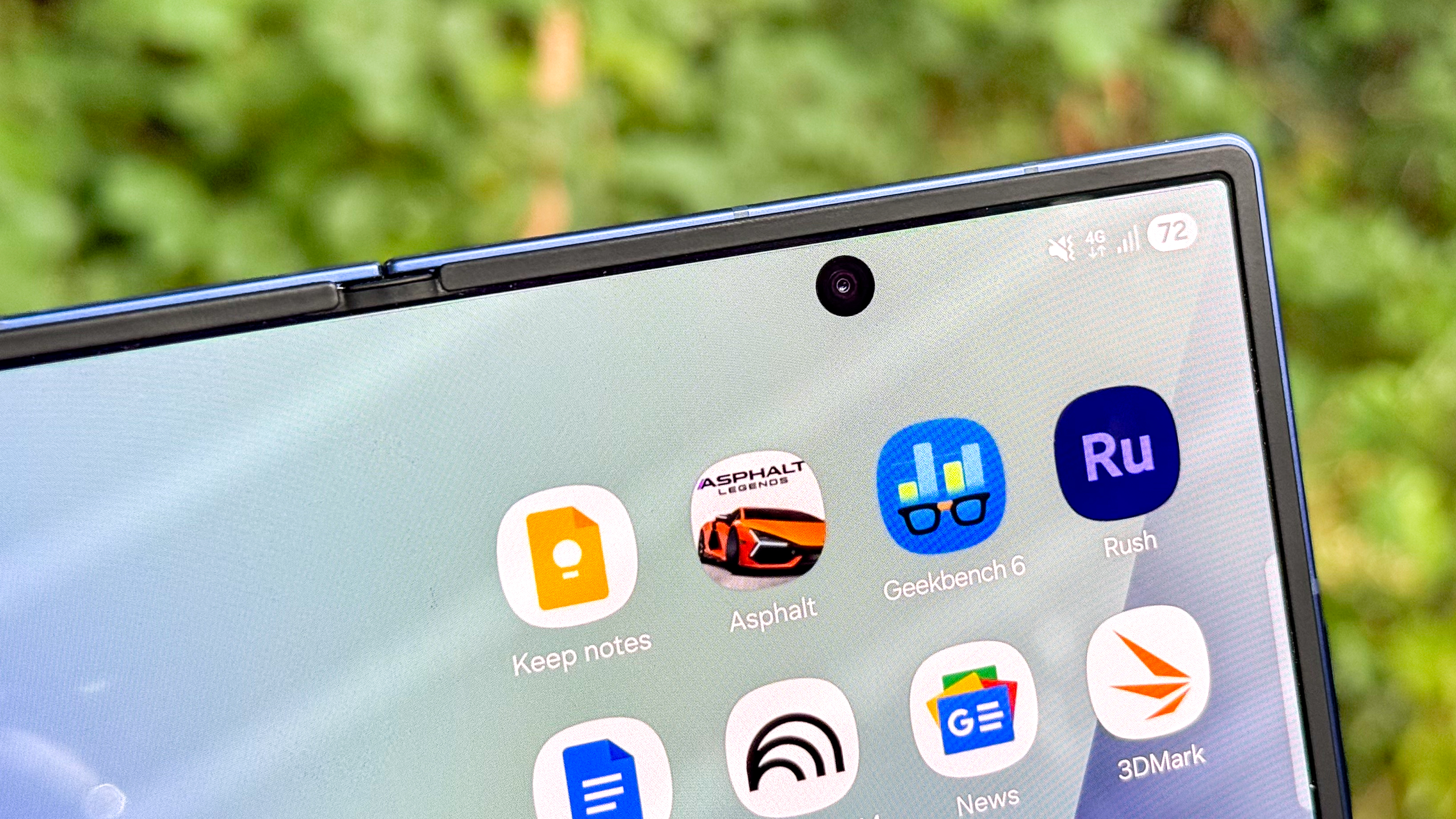
I do have some nitpicks with the design. The first is the camera for the inner display. Samsung moved from an invisible under-display camera to a punch hole, it’s an eyesore. I also wish the camera bump wasn’t so thick. As a result, the phone wobbles when you press use it on a table.
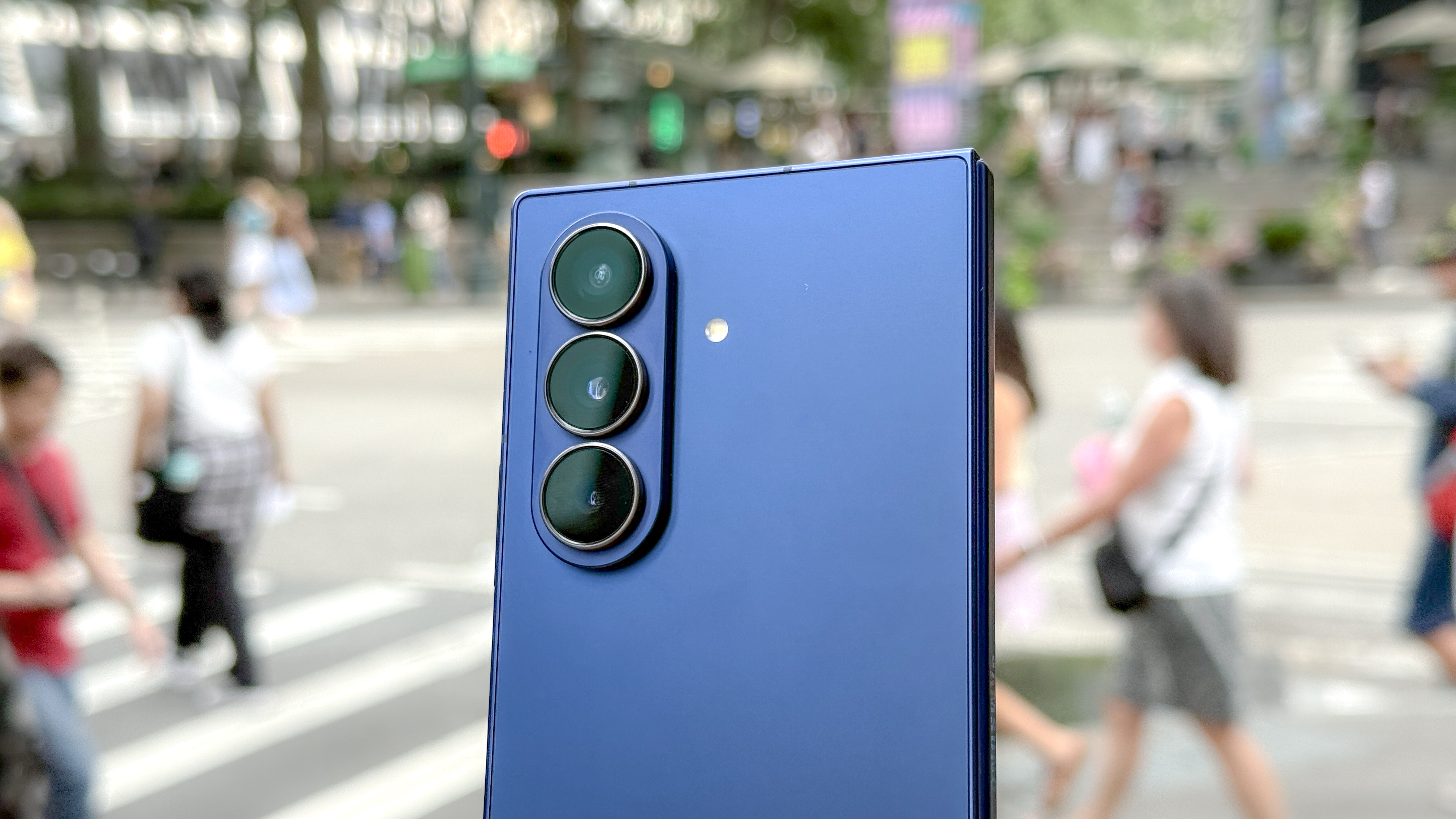
One more thing. I think the Z Fold 7 could be slightly easier to open. It’s so thin you have to dig your nails in there.
How about colors? If you want to stand out, get the bold Blue Shadow option. I love it. If you don’t like fun get the Jetblack or Silver Shadow option. There’s also an exclusive Mint color on Samsung.com.
Samsung Galaxy Z Fold 7 review: Displays
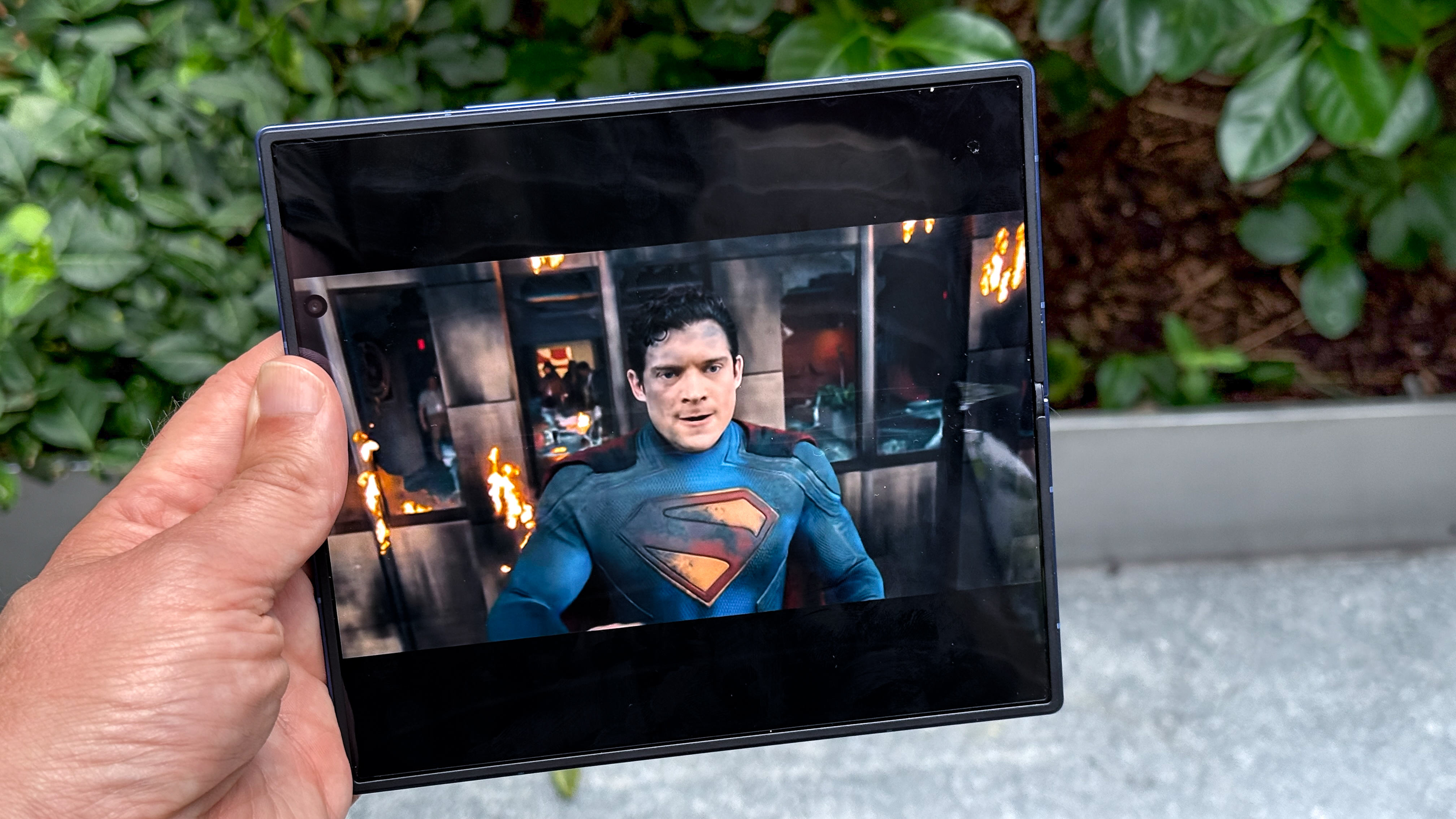
The Galaxy Z Fold 7 gets three major display upgrades versus the Z Fold 6. Both the cover and main displays are now larger, and the crease on the unfolded main display is definitely less noticeable.
Starting with the inside, the Galaxy Z Fold 7’s main display has grown from 7.6 inches to 8 inches, which is a pretty big jump.
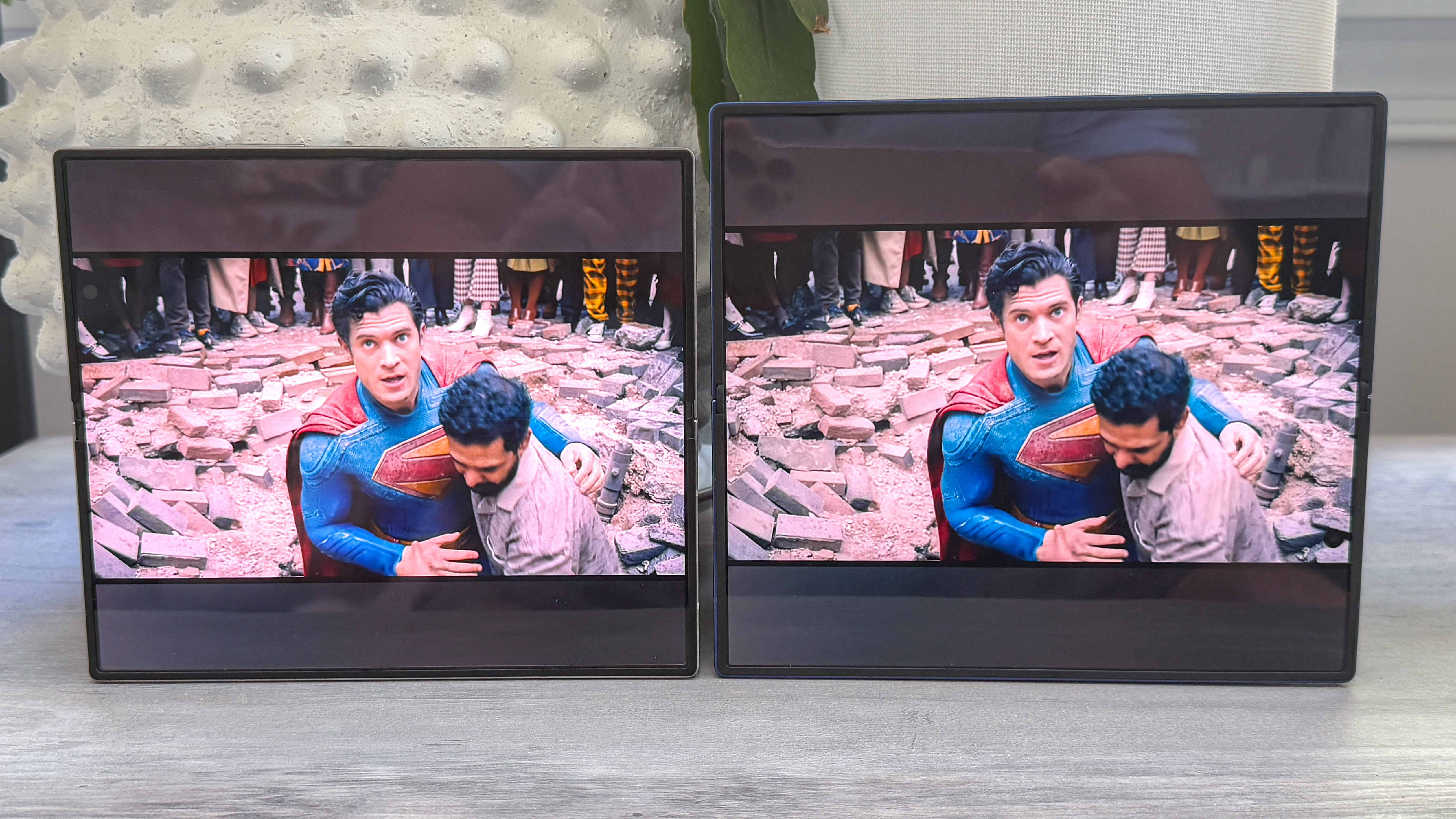
I appreciated the extra real estate when watching the Superman trailer on YouTube but especially when working on spreadsheets in Google Sheets. You can see a lot more info without scrolling. And it’s nice being able to see several open tabs at once when surfing the web in Chrome.
| Row 0 - Cell 0 | Brightness | Color | Accuracy | |
Galaxy Z Fold 7 | 2,310 | 96%/105.2% (Natural/Vivid) | 0.22/0.28 (Natural/Vivid) | Row 1 - Cell 4 |
Galaxy Z Fold 6 | 2,317 | 81.2%/96.9% (Natural/Vivid) | 0.24/0.24 (Natural/Vivid) |
|
Pixel Pro 9 Fold | 2,319 | 78.9% / 89.2% (Natural/Adaptive) | 0.19/0.33 (Natural/Adaptive) | Row 3 - Cell 4 |
Galaxy S25 Ultra | 1,860 | 90.8%/107.3% (Natural/Vivid) | 0.24 | Row 4 - Cell 4 |
iPhone 16 Pro Max | 1,553 | 80.9% | 0.26 |
|
The other plus is that Samsung has worked hard to minimize the main display’s crease. It’s still there but it’s much less noticeable. I put the Z Fold 7 and Z Fold 6 side by side and the line running down the middle of the screen is a lot more subtle from various angles. So one of the biggest complaints about foldable phones is (almost) no more.
I will say, though, that the Galaxy Z Fold 6’s panel looked a bit richer side by side next to the Z Fold 7 with slightly wider viewing angles.
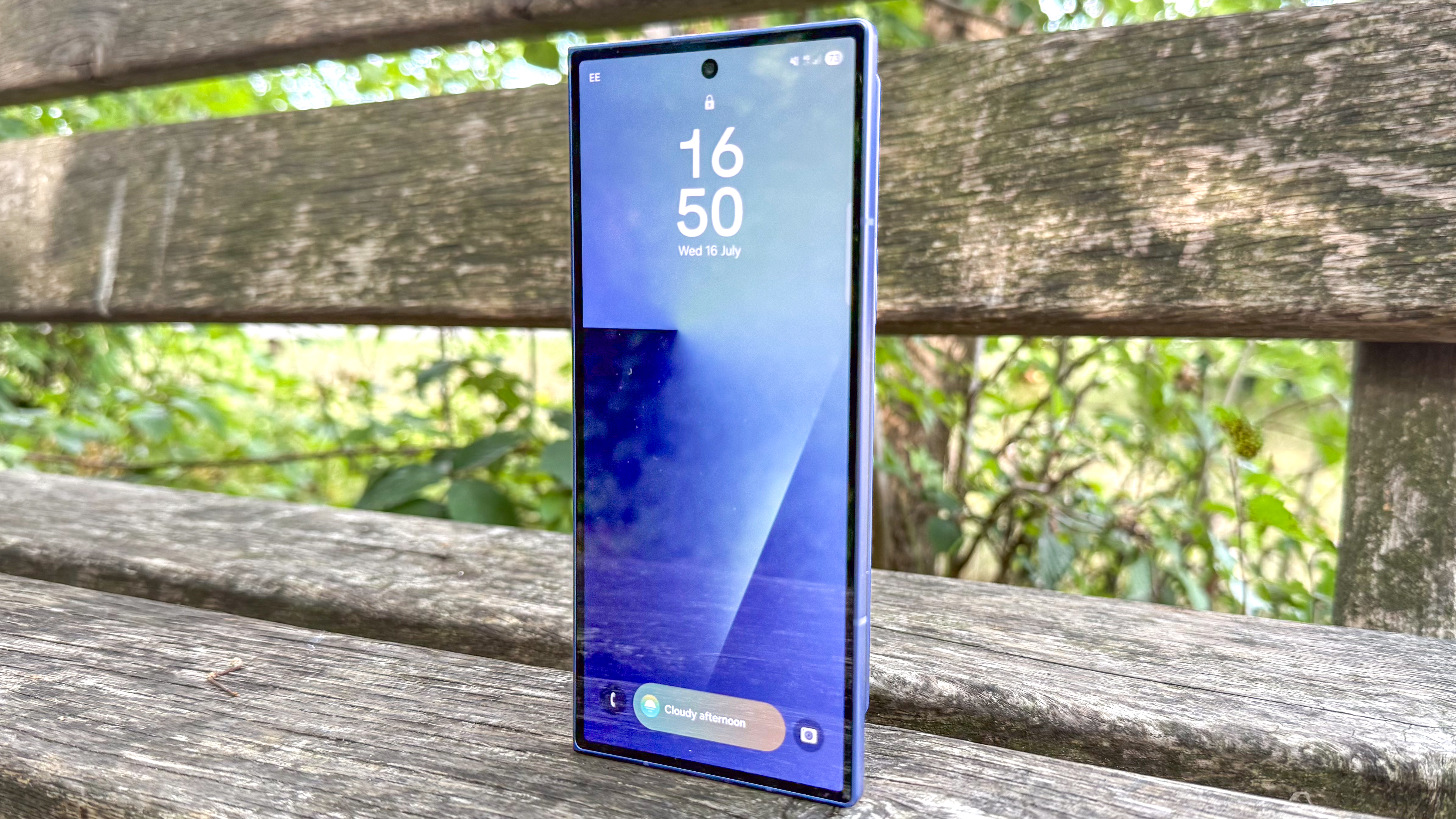
Meanwhile, the Z Fold 7’s cover display is now 6.5 inches, up from 6.3 inches on the Fold 6. It’s wider, too, so I found typing more comfortable. It’s certainly not as wide as the S25 Ultra’s 6.9-inch panel, but I had no problem checking emails, responding to Slack messages and changing tracks on Spotify, and so on.
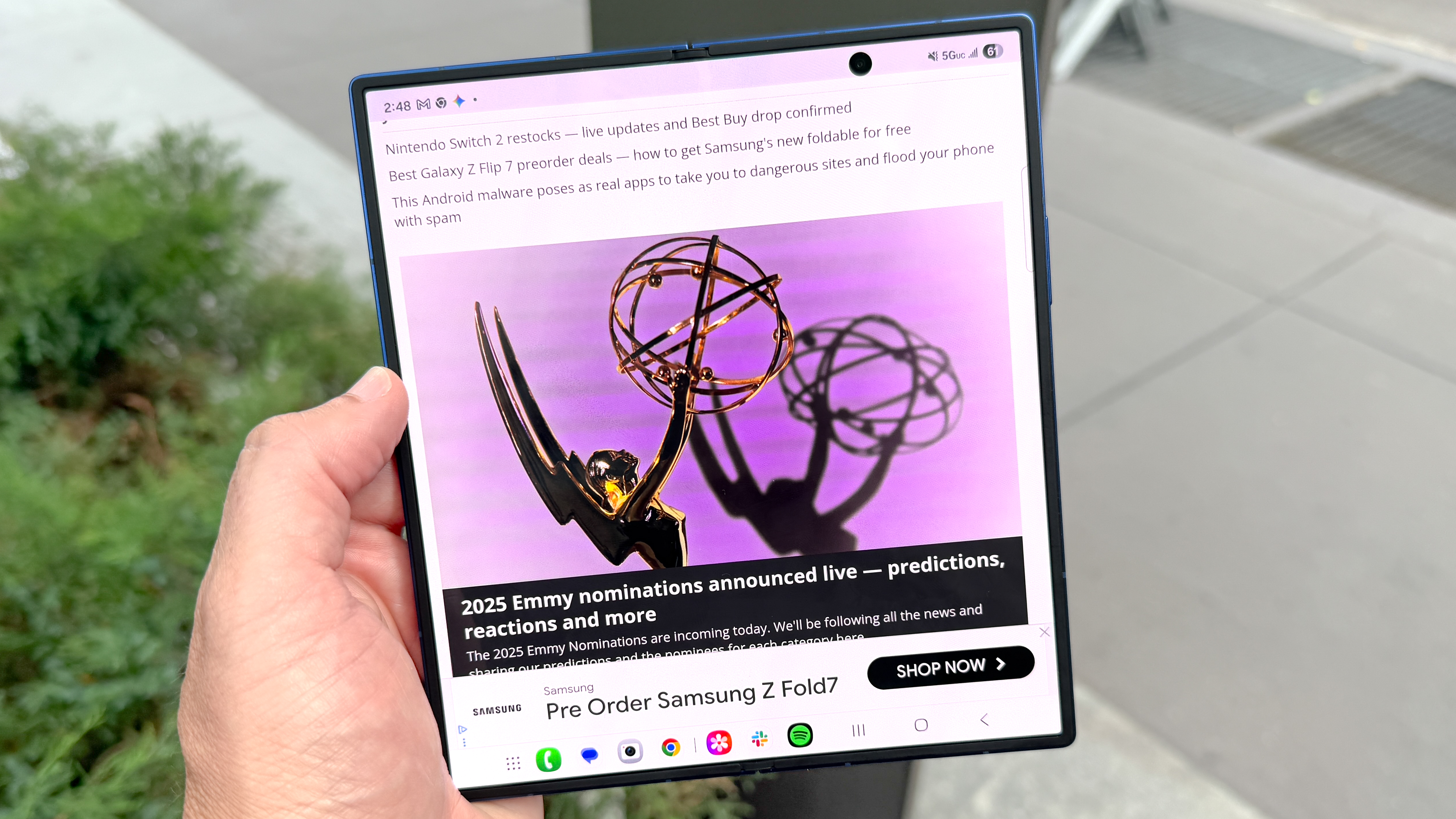
In our labs, the Z Fold 7’s main display delivered a peak brightness of 2,310 nits when displaying HDR content, compared to 2,317 nits for the Z Fold 6. So they’re comparable. The S25 Ultra, by comparison, reached 1,860 nits in the same test.
The Fold 7’s main display also registered 96% of the DCI-P3 color space in Natural mode and 105.2% in Vivid mode. That’s better than the Z Fold 6, and the S25 Ultra was slightly better in Vivid mode and slightly worse in Natural mode.
Samsung Galaxy Z Fold 7 review: Cameras
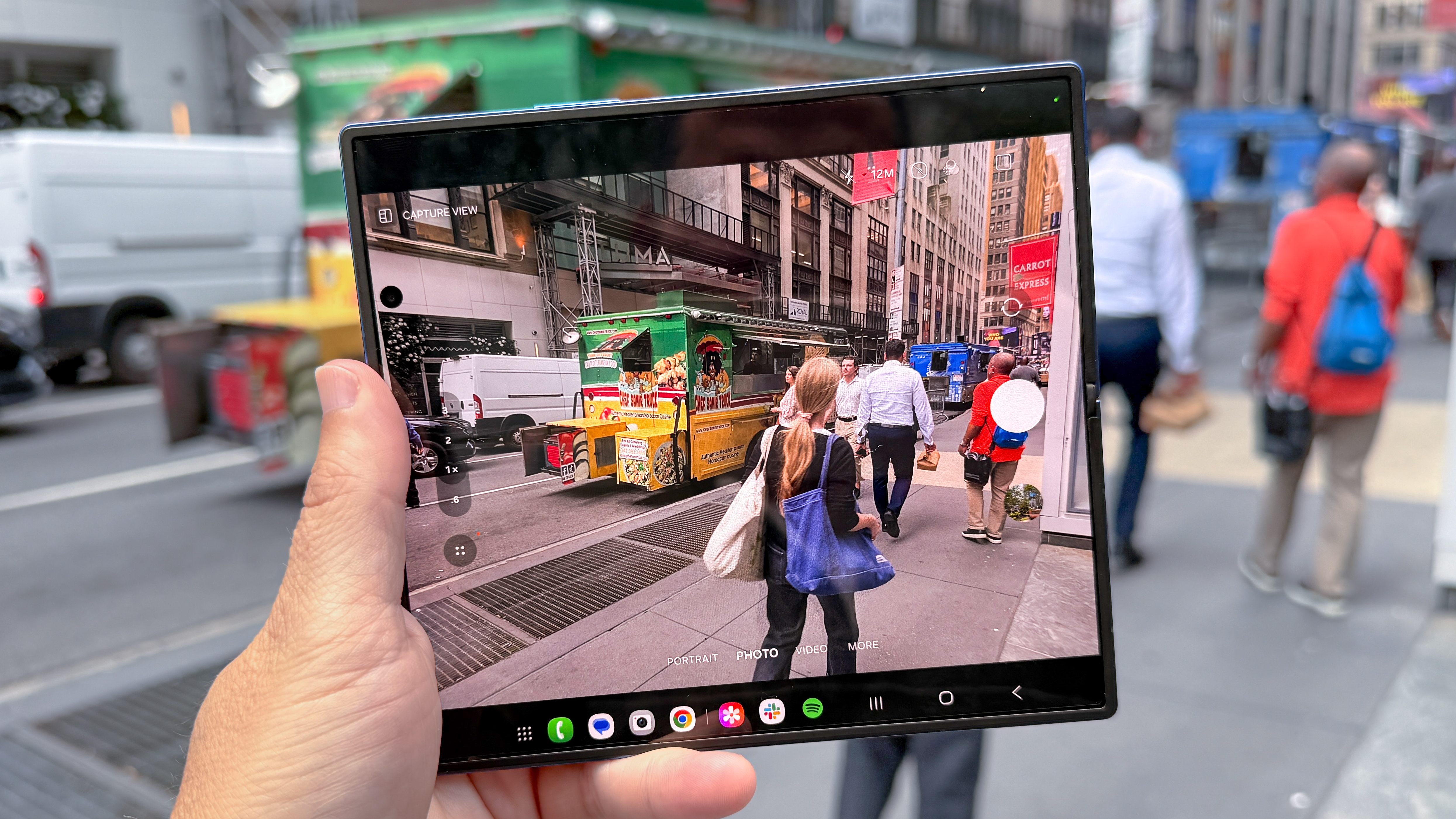
The Galaxy Z Fold 7 has three major camera upgrades, and one of them is controversial.
Samsung has upgraded the main wide camera from 50MP to 200MP. And that means you not only get more detail but can crop in more on your shots so you have more creative freedom.
You also get autofocus on the 12MP ultrawide camera, which means you can get some very detailed macro shots. Just take a look at this shot of a Rose of Sharon flower. The Z Fold 7 delivers much more details in the petals, stamen and even the flecks of pollen vs. the Z Fold 6.
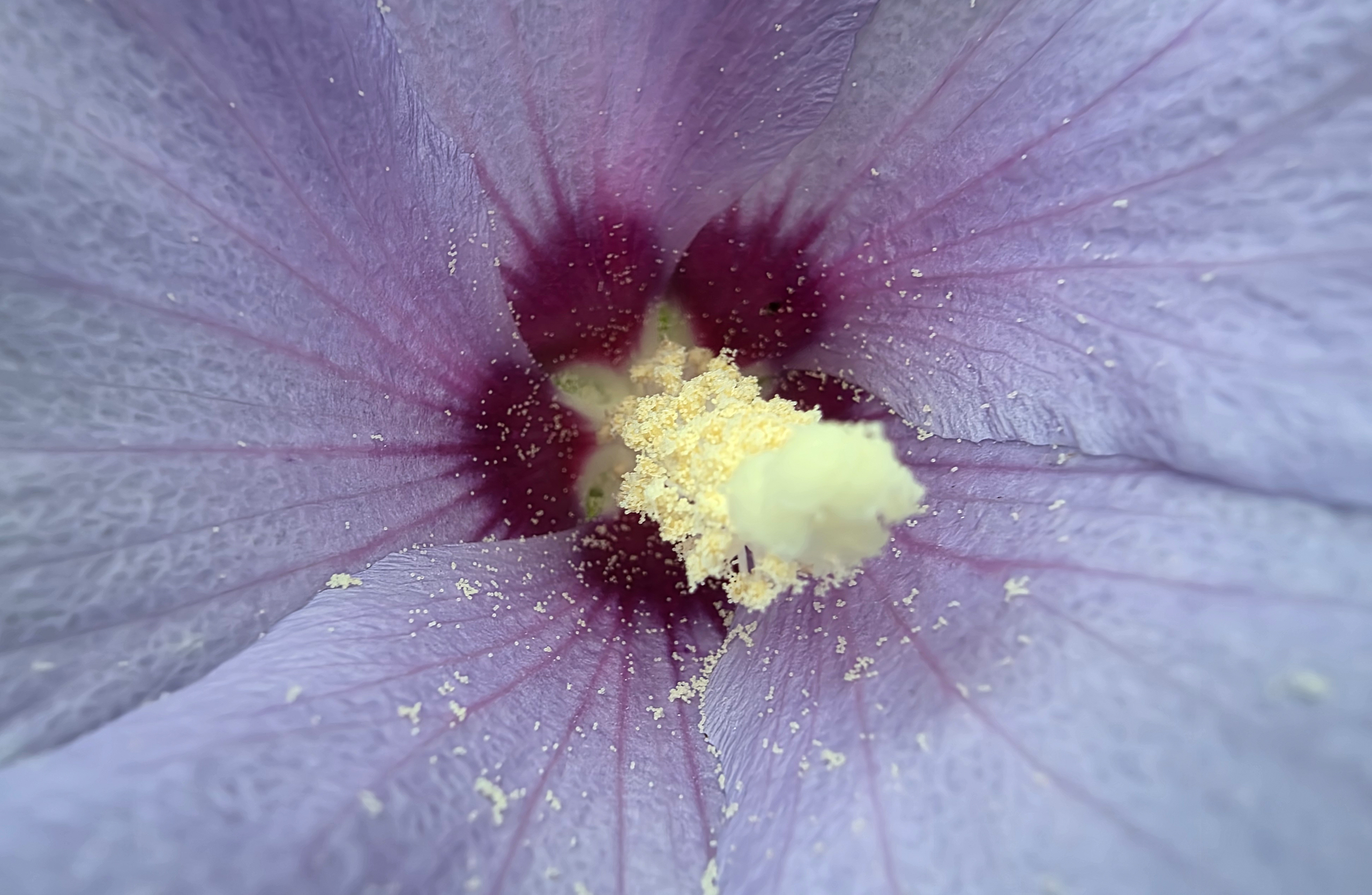
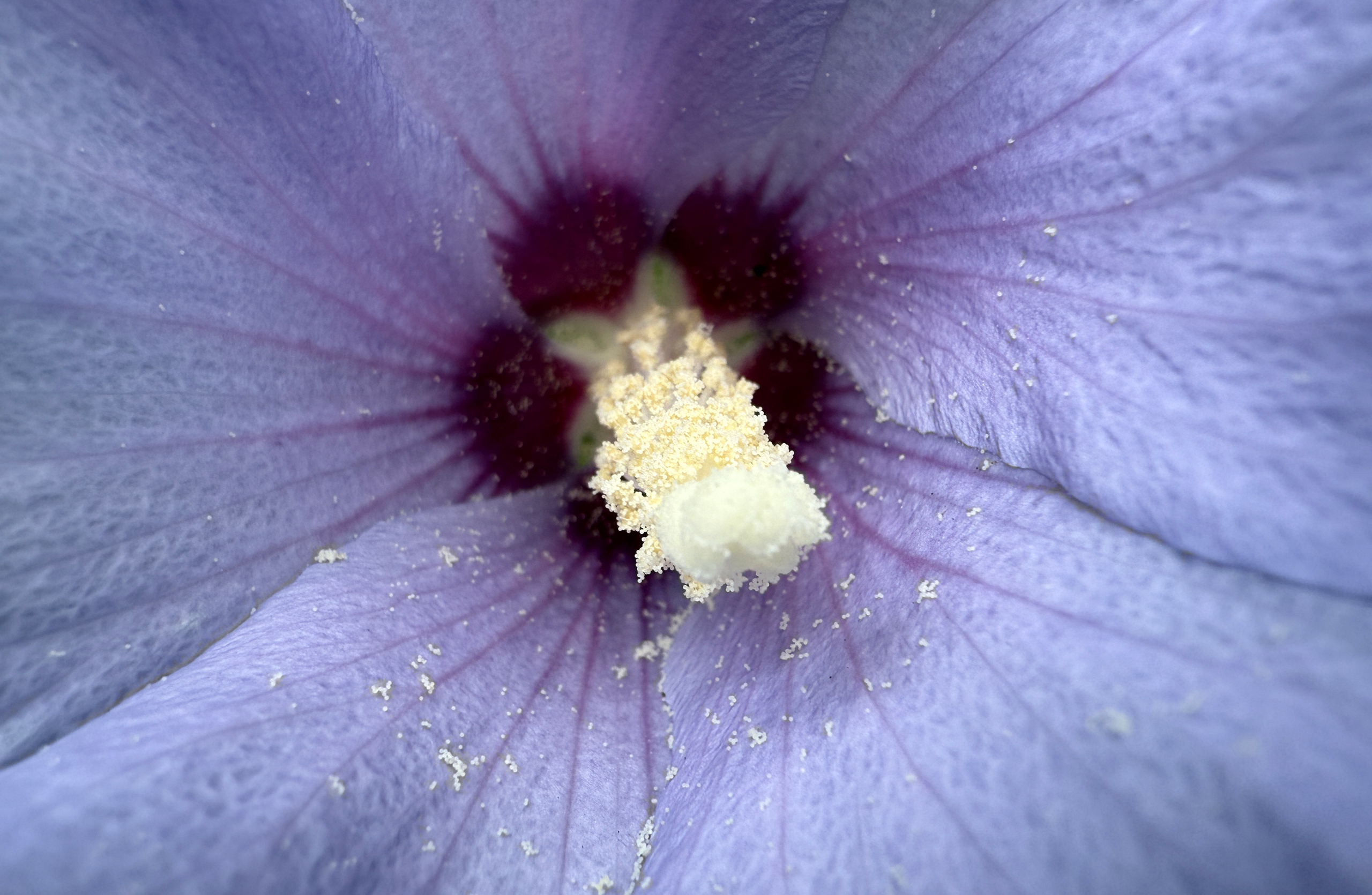

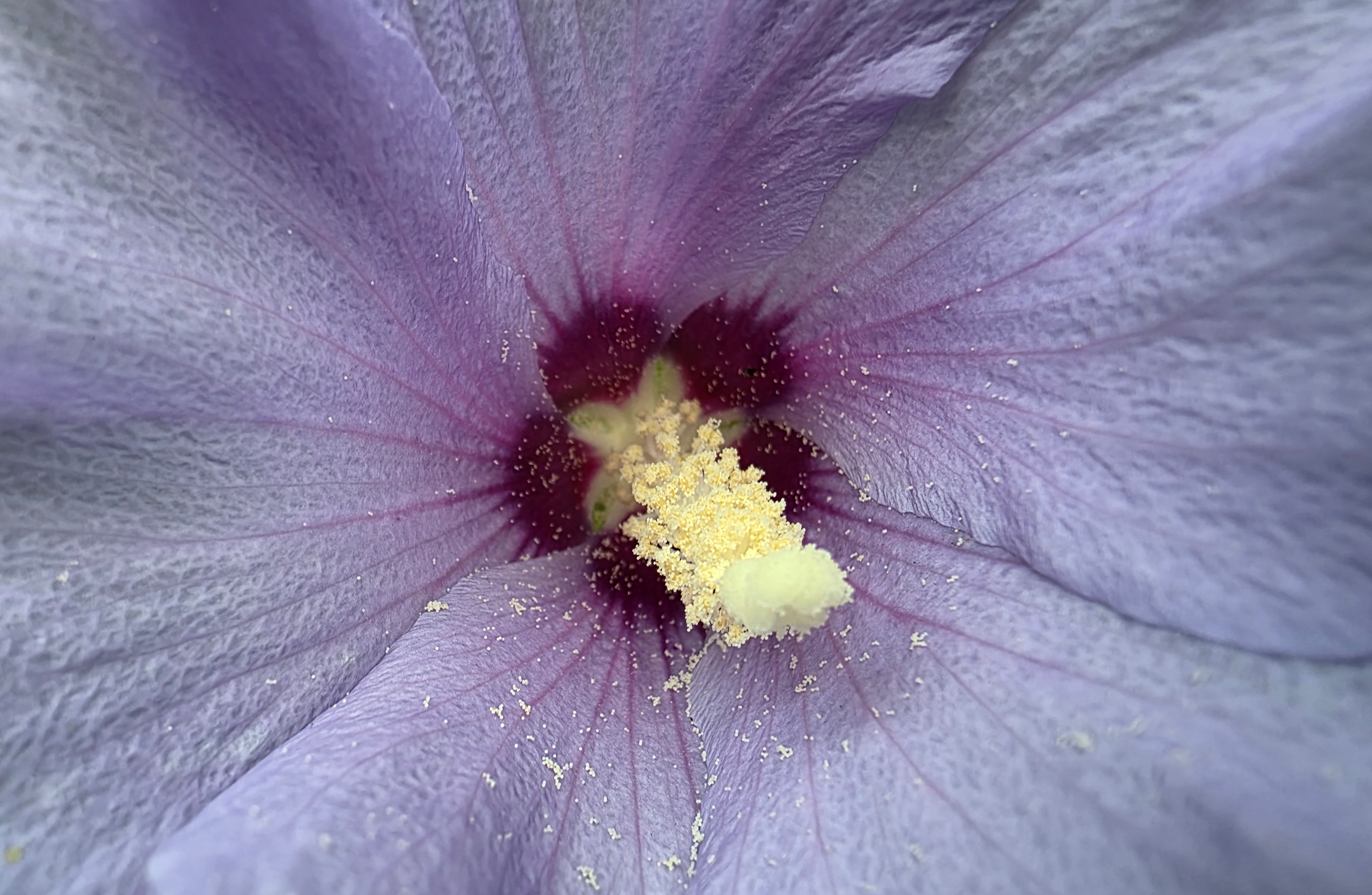
Just keep in mind that the S25 Ultra’s 40MP ultrawide camera can capture even sharper looking macros, as you’ll see in the gallery above.
The third major change is the inner selfie camera. Samsung has ditched the under-display 4MP camera on the Fold 6 for a 10MP punch hole camera on its new foldable. And while aesthetically it’s not pleasing, it does take better looking photos.
Check out this selfie comparison. The Z Fold 7’s shot is more colorful and there’s more detail in my eyes and shirt. The Fold 6’s image is blurrier and a bit washed out by comparison.
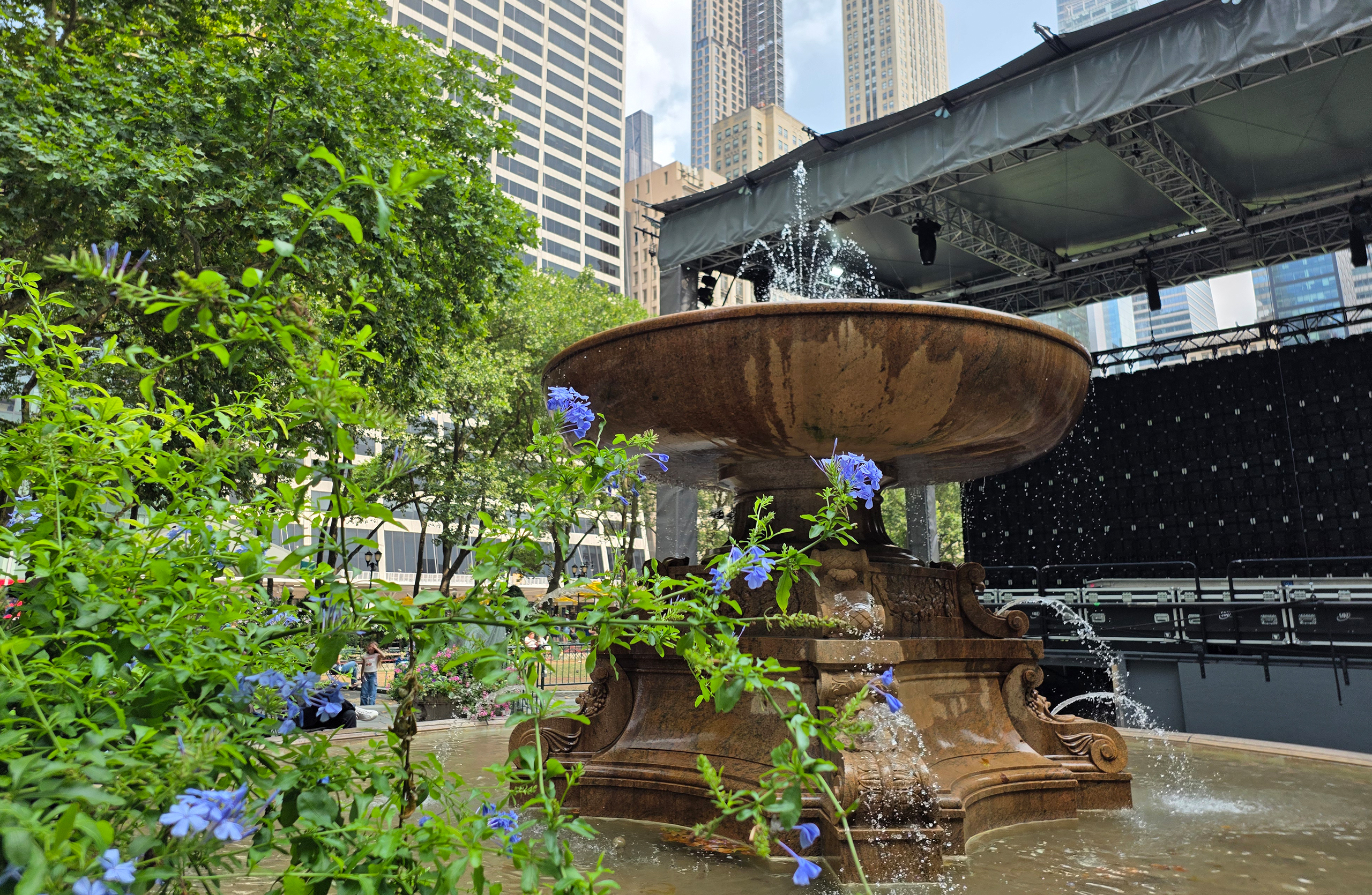
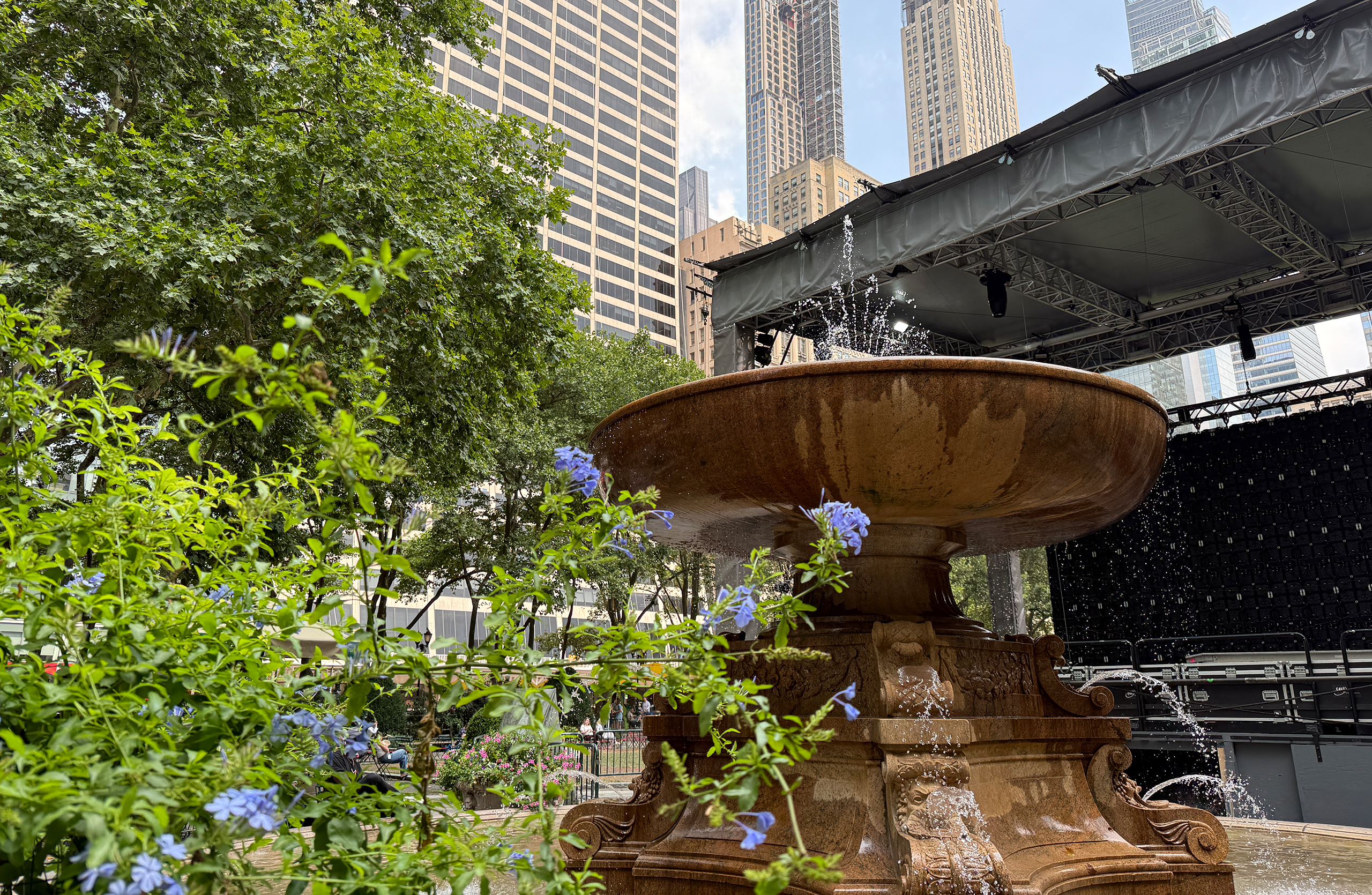
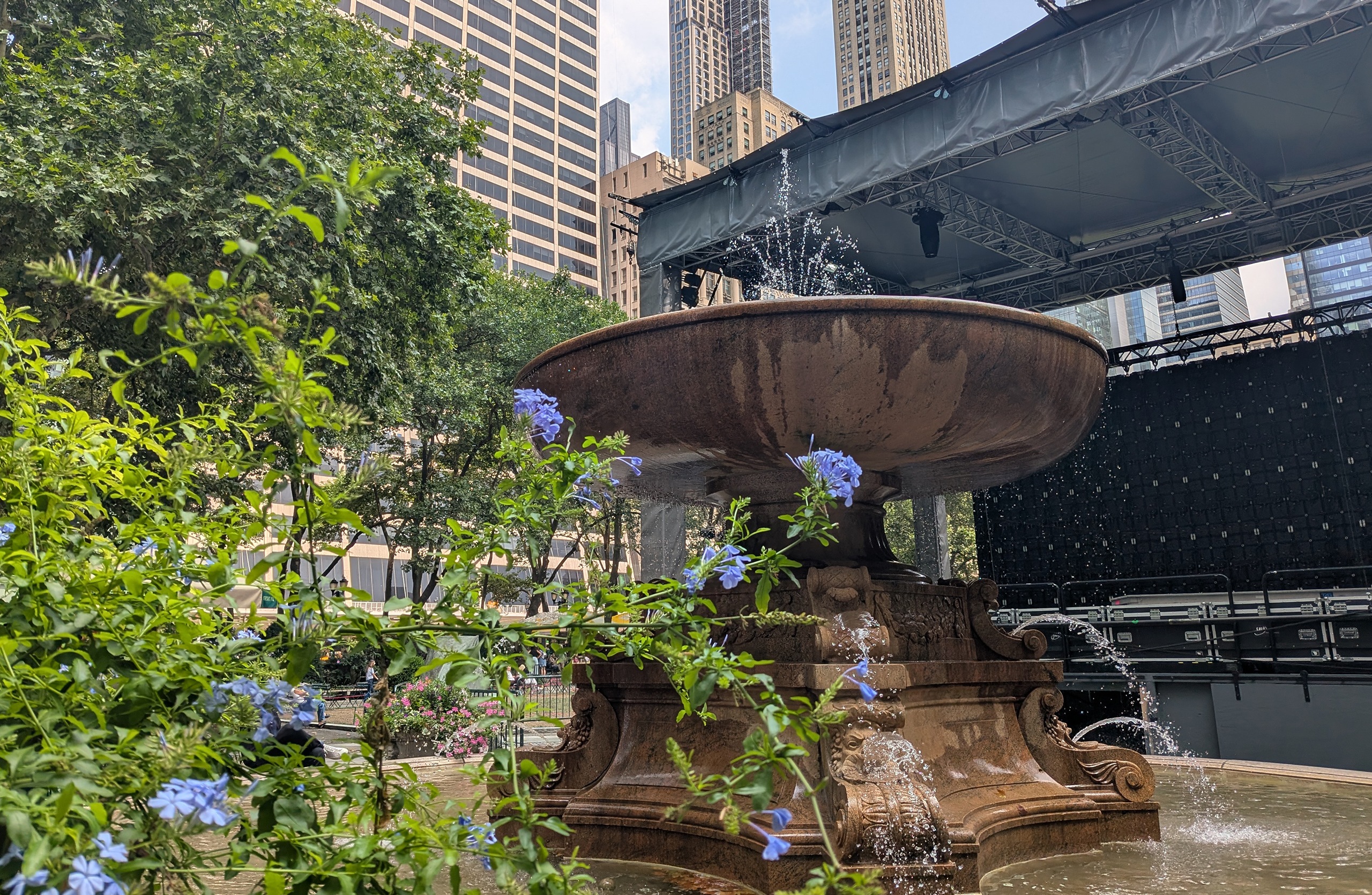
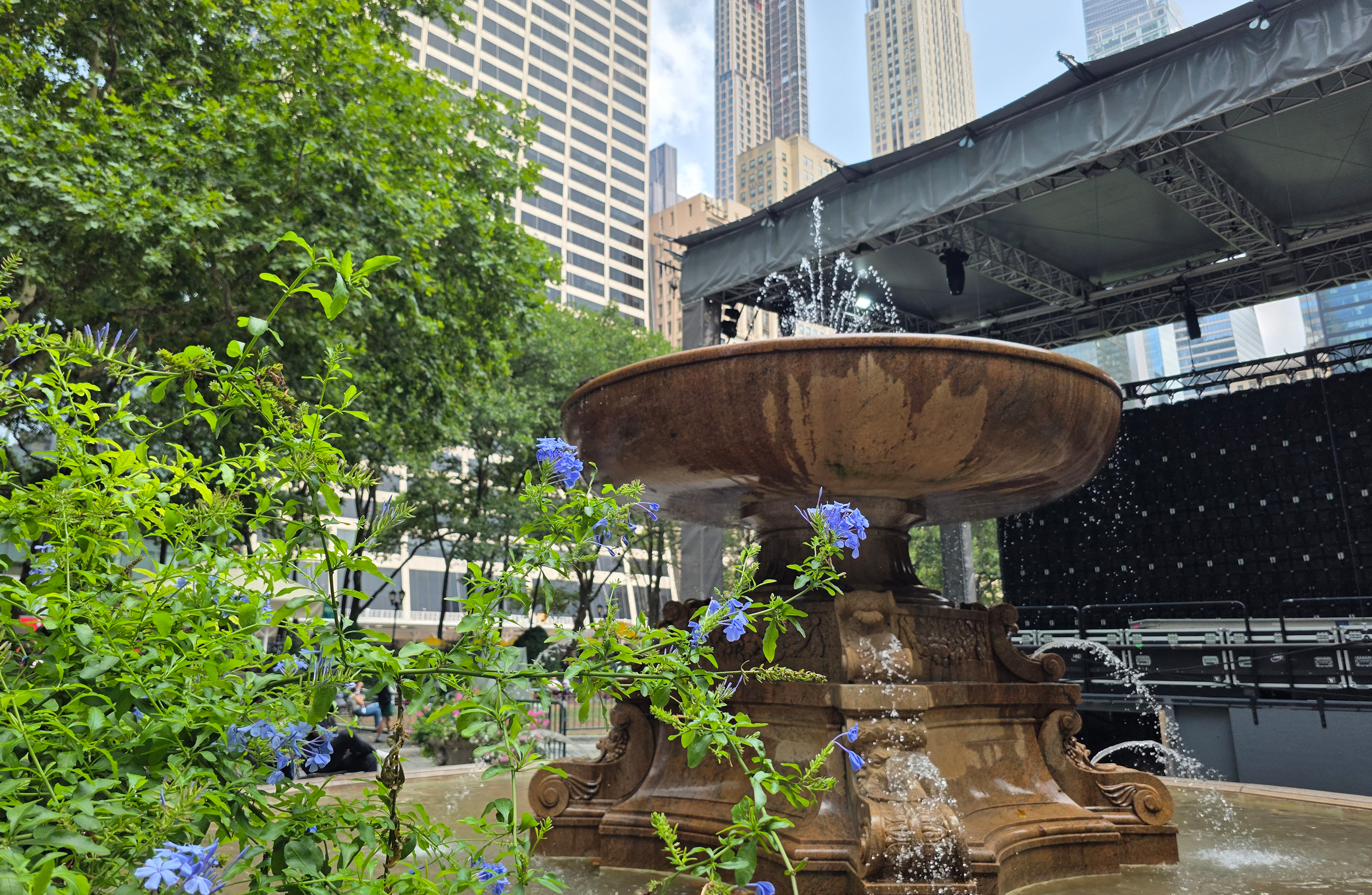
The main camera did a great job with this photo of the fountain in Bryant Park. The blue forget-me-not flowers really pop, and the fountain itself has a subtle blur effect. Meanwhile, the Pixel 9 Pro Fold’s pic is more evenly focused throughout, but there’s more of a haze to the image. The fountain gets a bit lost in the iPhone 16 Pro Max’s image.
With the sun behind the clouds I took this somewhat moody image of Bryant Park using the Z Fold 7’s ultrawide camera. In this case I prefer the brighter shot taken by the S25 Ultra. But the Fold 7 does a better job of capturing the clouds than the S25 Ultra.





So how about portraits? The Z Fold 7 holds its own versus the competition. My green shirt with white stripes looks vibrant, and there’s good definition in my hair and hands. Still I slightly prefer the brighter exposure from the Z Fold 6 and S25 Ultra. The Pixel 9 Pro’s image looks a bit flat and dull, while the iPhone’s image has the best contrast.
In low light, the Galaxy Z Fold 7 captured a fairly impressive photo of string lights outside a restaurant. There’s a good amount of detail in the bricks and trees, and the Modelo-branded umbrellas pop. I’d give a slight edge to the iPhone 16 Pro Max because you can make out the lights a bit better in the foreground.
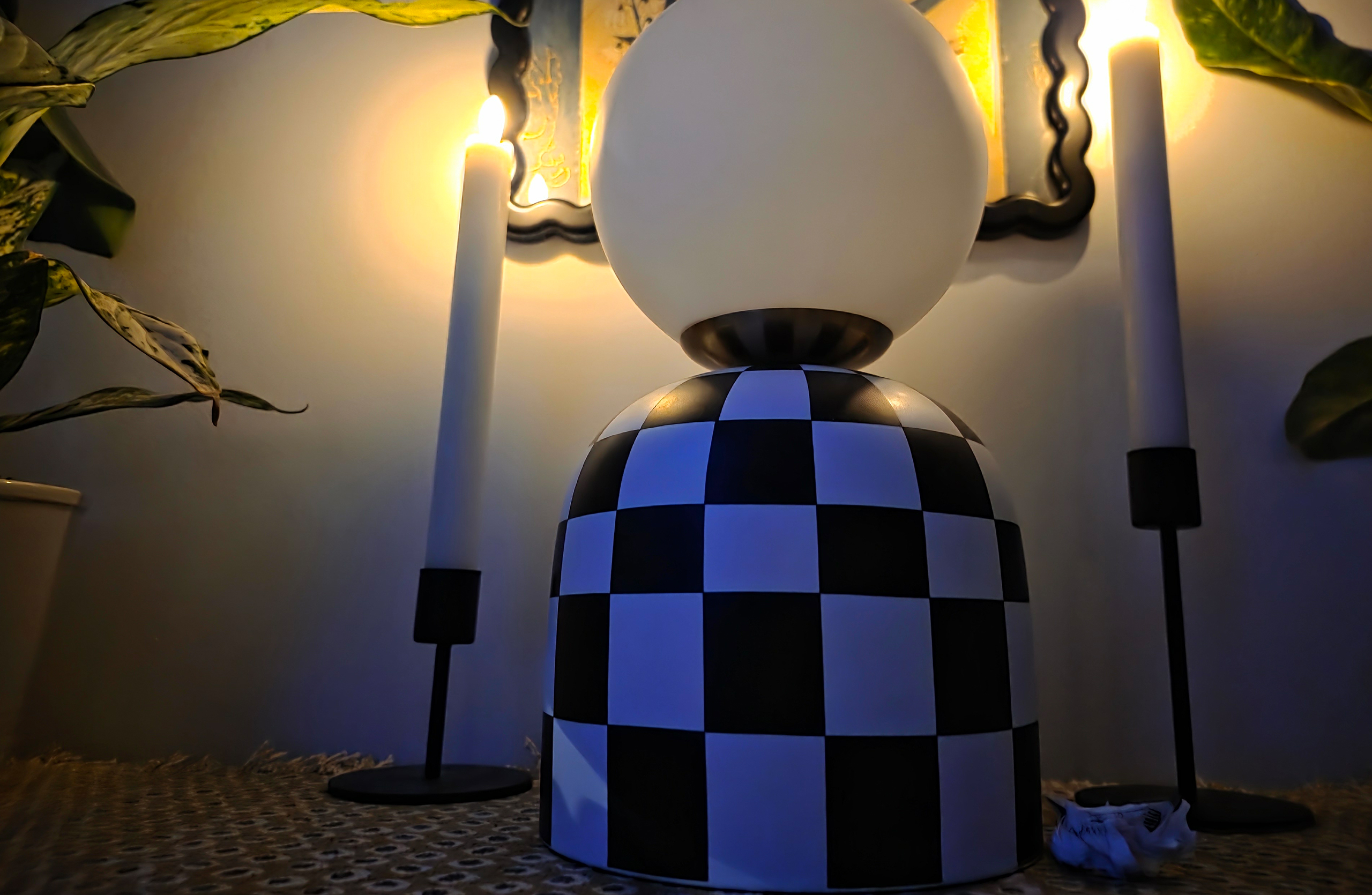
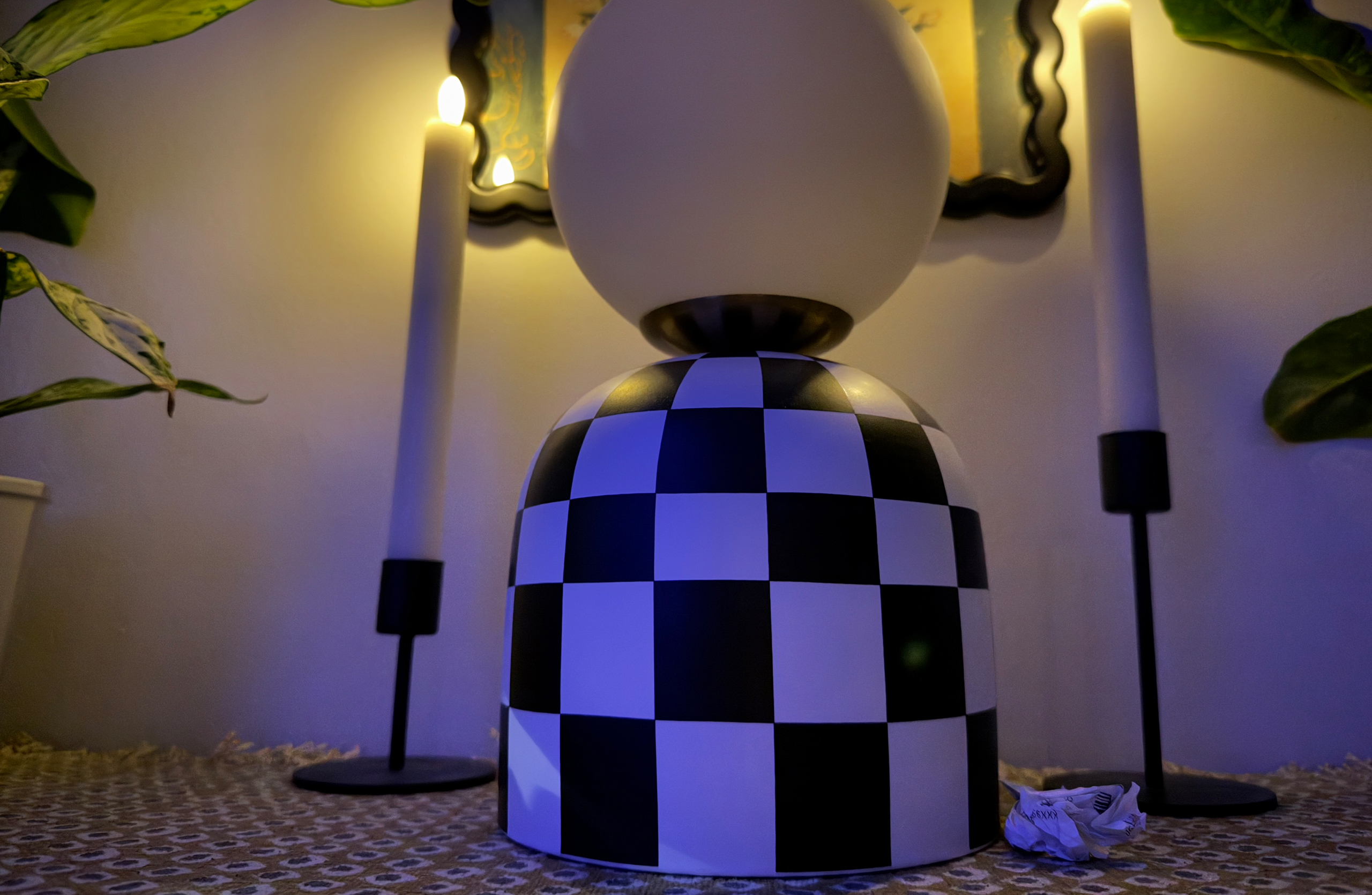
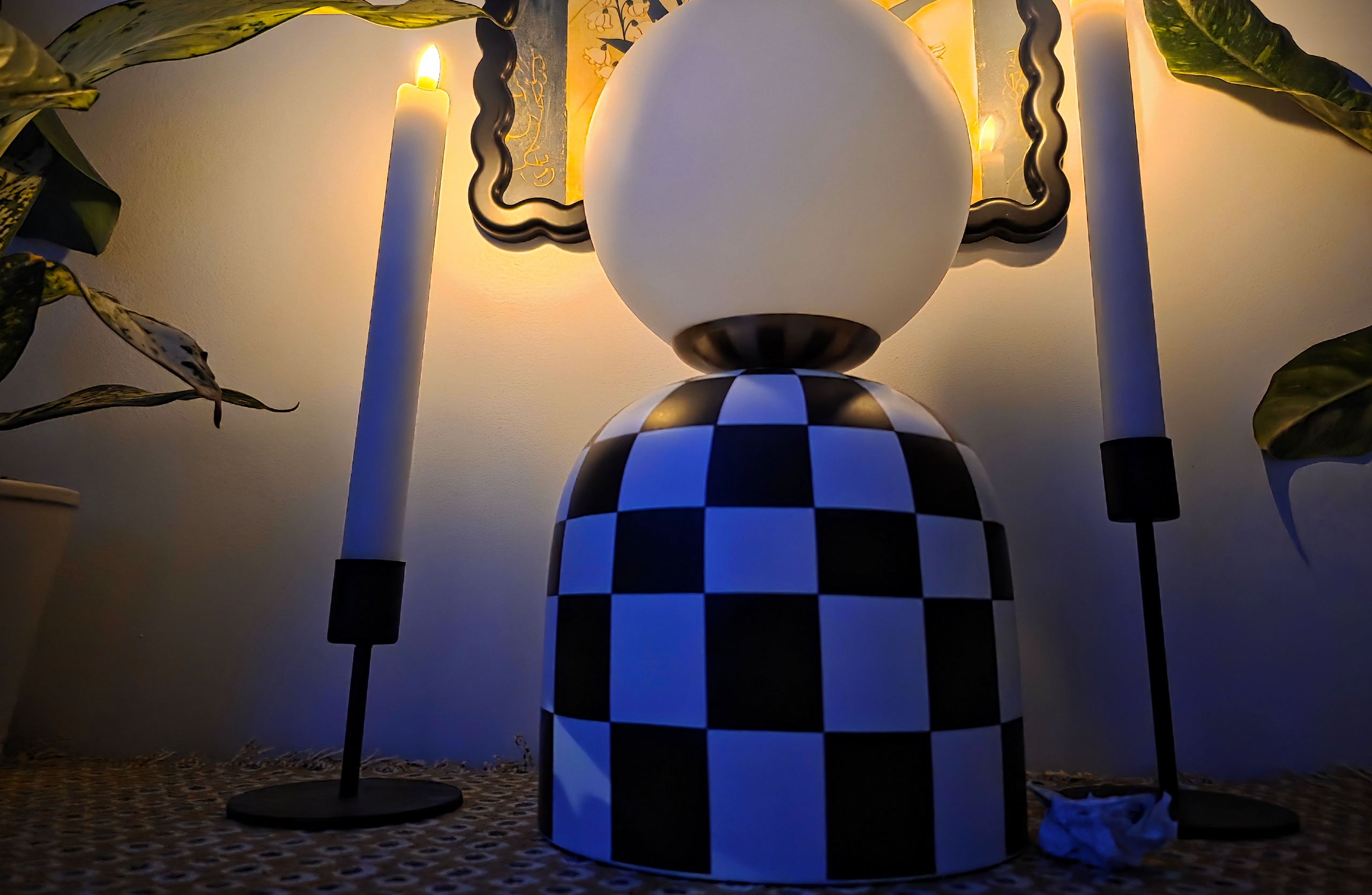
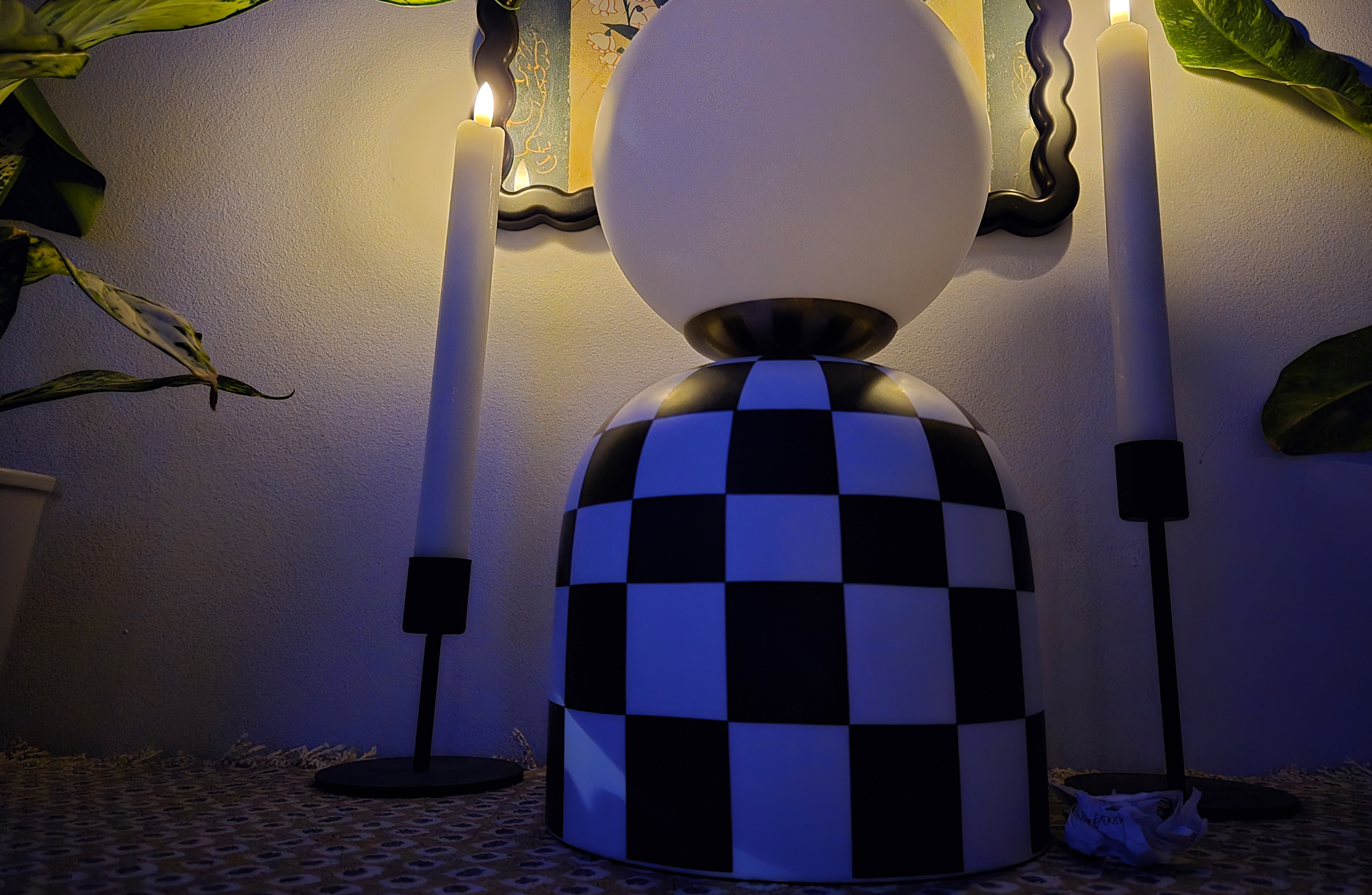
Indoors the Galaxy Z Fold 7 struggled with this photo of a checkerboard lamp in a dark room with two candles behind it. It had trouble focusing but actually fared better than the S25 Ultra, whose pic turned out quite dark.
Samsung Galaxy Z Fold 7 review: Video
The Galaxy Z Fold 7 captures crisp video up to 8K at 30 fps and promises better results in low light thanks to Samsung’s ProVisual Engine.
I shot this video of a creek on a very muggy day right before a thunderstorm hit, and the Z Fold 7 recorded colorful footage with rich greens and browns against a grayish-white sky. As I zoomed in, the camera did a fine job rendering the ripples in the water.
In this footage of the Bryant Park fountain, the Z Fold 7’s footage looks more evenly exposed, while the Z Fold 6’s video appears overly bright and washed out. The Fold 7 clip also offers more details in the stone and water as I zoomed in.
To test the ProVisual Engine’s chops, I shot this footage of a pool in near darkness. The Z Fold 7’s clip looks brighter and a bit crisper, especially as I zoom in on the basketball net.
Samsung Galaxy Z Fold 7 review: AI
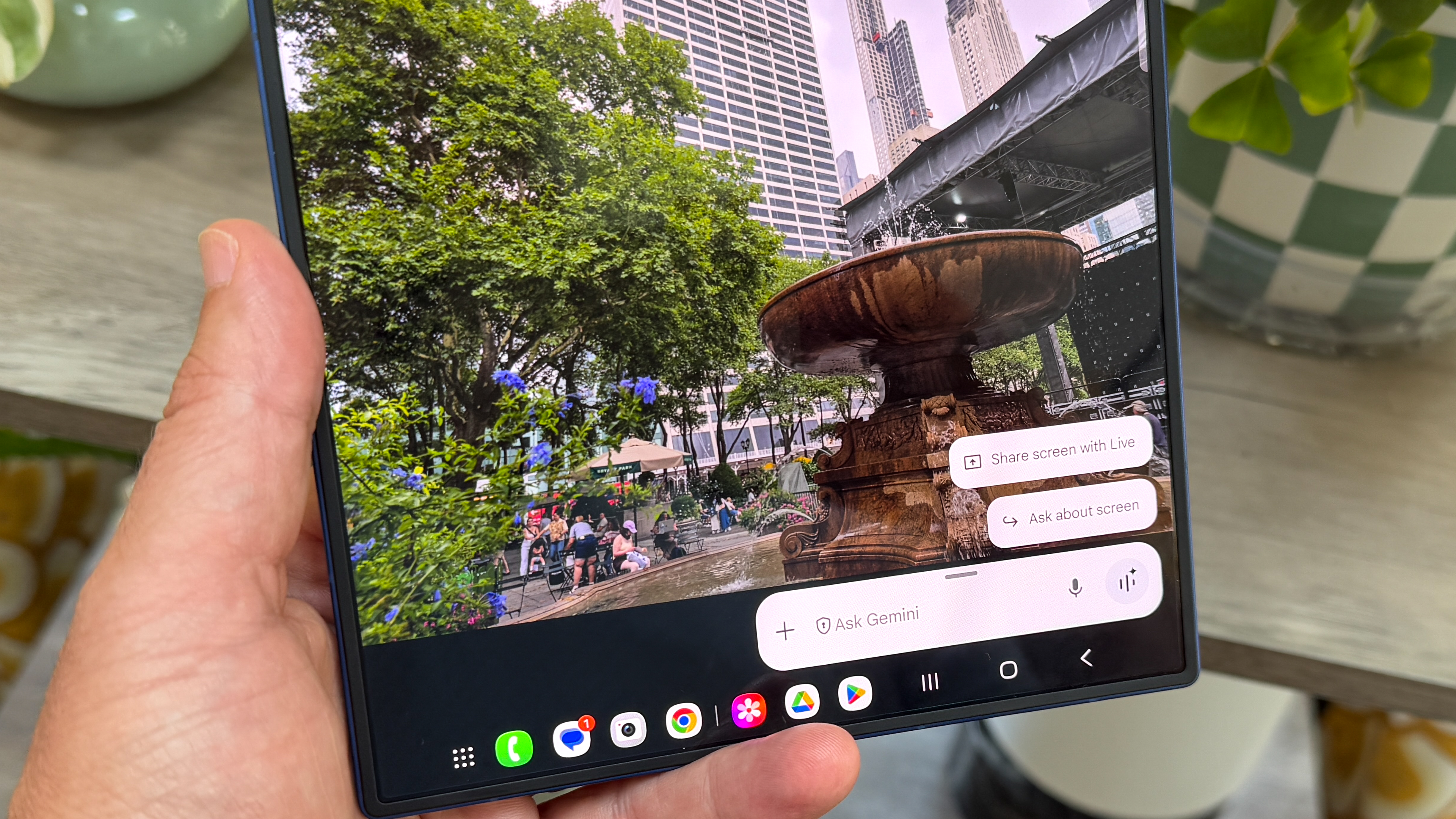
The Galaxy Z Fold 7 is so far ahead of the iPhone on AI it’s almost sad. While there aren’t many new features versus what the S25 Ultra introduced, Samsung deserves credit for making more of its Galaxy AI tools foldable friendly. And Gemini steals the show.
I love that you can just long press the Z Fold 7’s side button and then quickly launch into a live audio and video chat with Gemini Live. The window just pops up on the bottom right side so it doesn’t cover up the app you’re using. I also like that you can share your screen with Gemini and ask questions about it.
For example, I opened a photo of the Bryant Park Fountain and asked about when it was made. I learned that the Josephine Shaw Memorial Fountain in Bryant Park was dedicated in 1912, and it’s the first major public memorial dedicated to a woman in New York City.
You can even ask Gemini questions while you’re playing a game. I asked where I should go next in Wuthering Waves and Gemini gave me directions (head North) to get to the next checkpoint.
The Galaxy Z Fold 7 is also super smart when it comes to generative AI photo edits. I just tapped the eraser button and it automatically recommended a bunch of people to zap out of my photo. With a couple of taps they were gone.
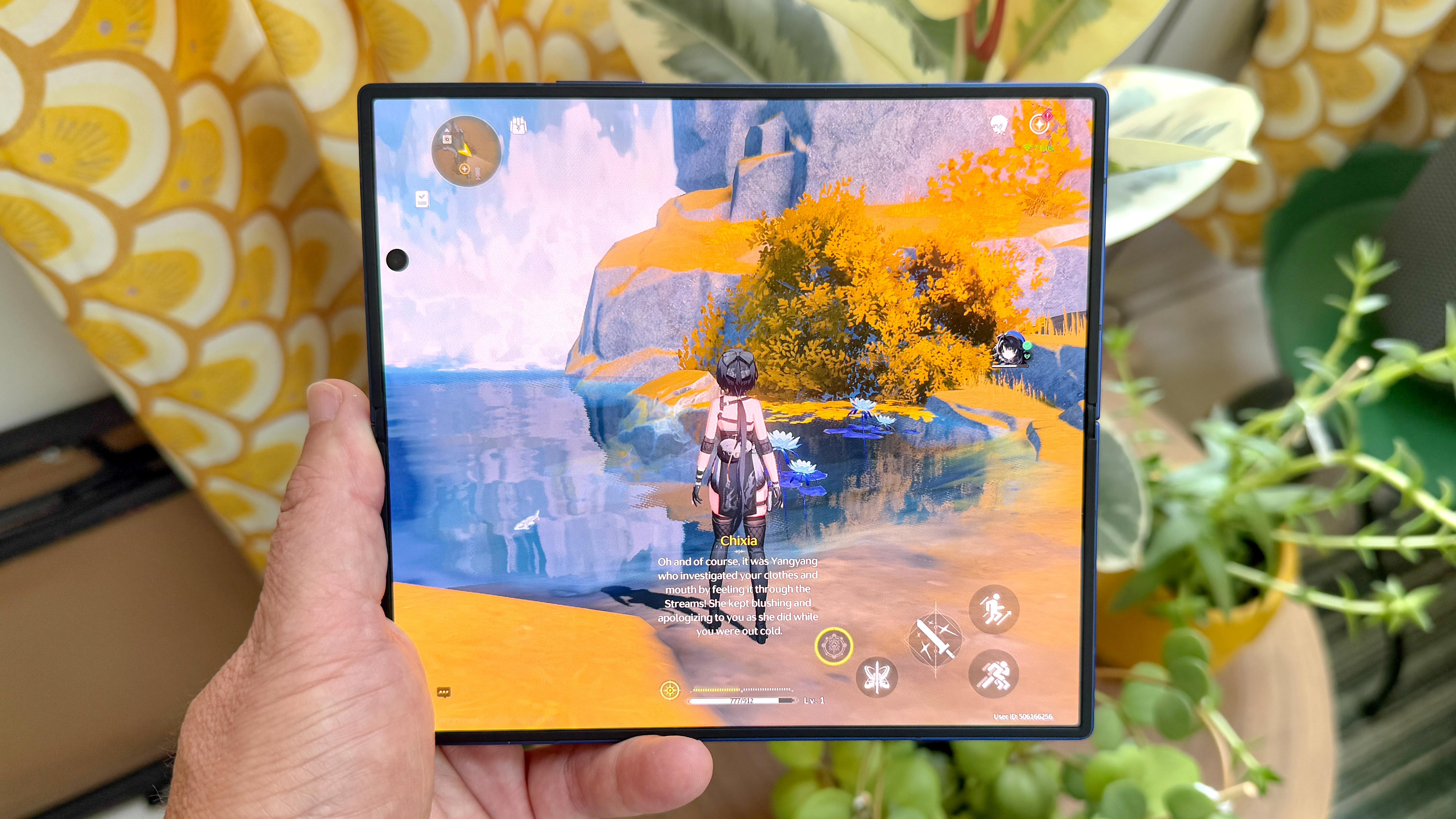
I appreciate that you can see the before and after side-by-side on the big 8-inch display. The same thing goes for other generative AI image tools like turning you and your friends into a comic, 3D cartoon, watercolor or sketch. You can even have AI fun with your pets now, including a funky Fisheye lens option.
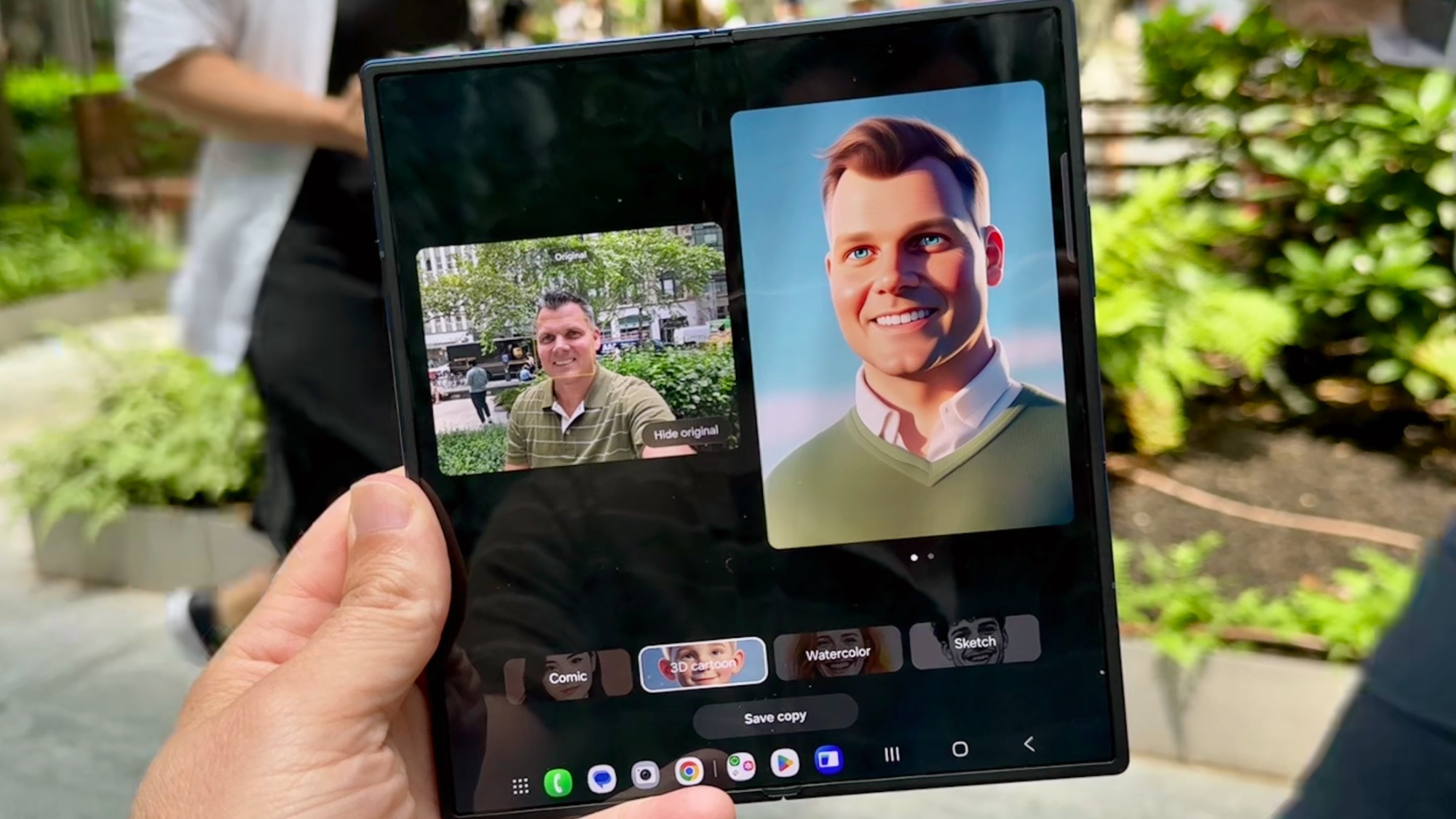
One of the more popular Galaxy AI tools gets a boost with the Galaxy Z Fold 7, and that’s Audio Eraser. You can now remove background noise not just from video recordings in the Gallery app but also in Voice Recorder, Notes and call transcript.
In one video, I could easily remove unwanted voices in the background in auto mode, and then I could fine tune from there for the exact desired result.
Samsung Galaxy Z Fold 7 review: Performance
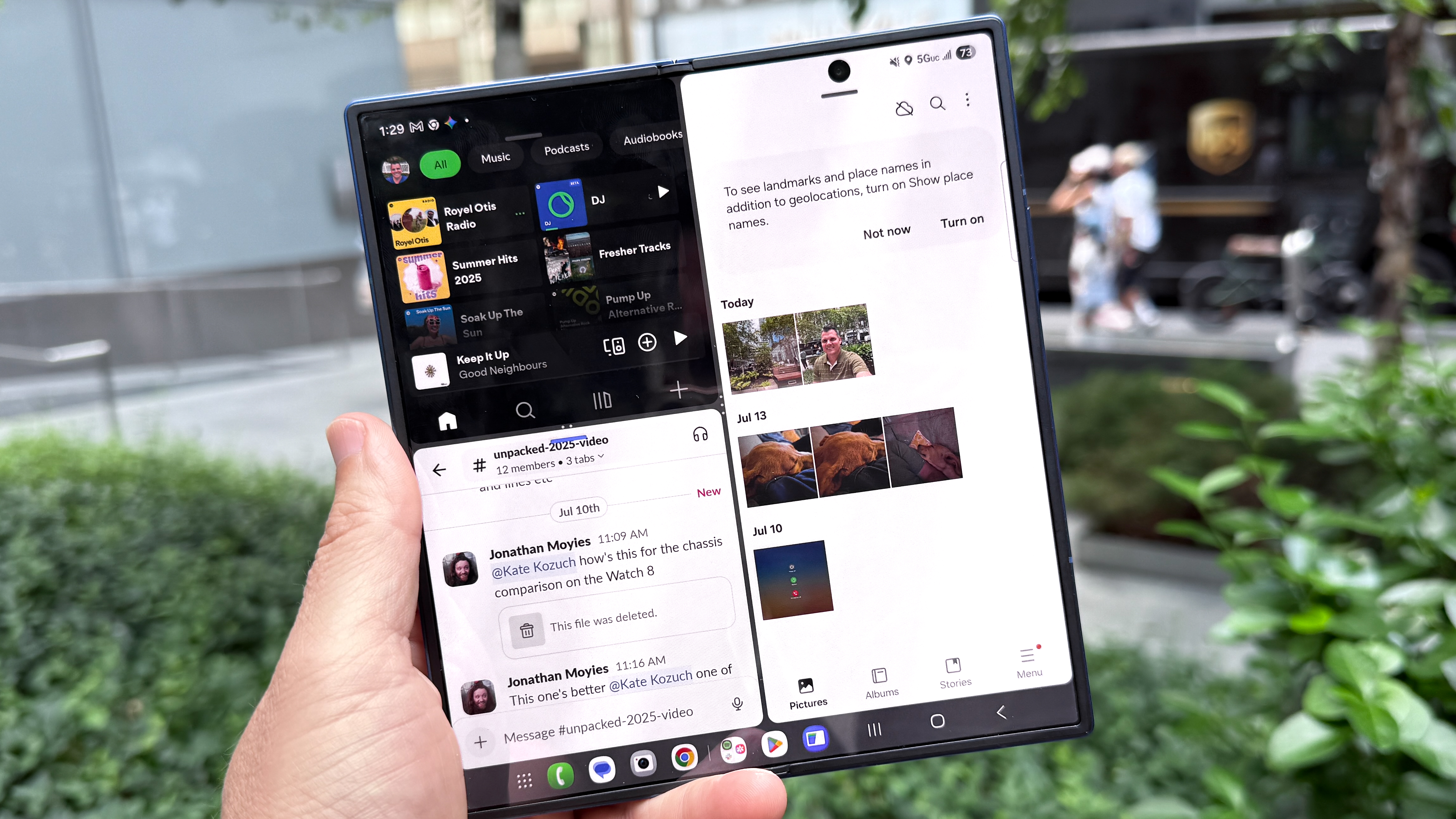
It took me playing only a few minutes of Wuthering Waves on the Galaxy Z Fold 7 to know this is a powerhouse phone. The graphics look stunning, and the frame rate stayed super smooth as I battled a ginormous monster and ran for my life.
I could also easily run three apps at once using the Multi Window feature, such as Slack, Gallery and Spotify. And it’s neat that you can drag and drop images from one window to another.
| Row 0 - Cell 0 | Geekbench | Adobe Premiere Rush | 3DMark Solar Bay Unlimited |
Galaxy Z Fold 7 | 3,052 / 9,735 | 52 seconds | 41.2 fps / 10,812 |
Galaxy Z Fold 6 | 2,172 / 6,901 | 40 seconds | 28.6 fps / 7,513 |
Galaxy S25 Ultra | 3,031 / 9,829 | 52 seconds | 42.4 fps / 11,140 |
iPhone 16 Pro Max | 3,386 / 8,306 | 21 seconds | 28.1 fps / 7,396 |
On Geekbench, which measures CPU performance, the Galaxy Z Fold 7’s Snapdragon 8 Elite chip paired with 12GB of RAM notched 3,052 on the single-core portion of the Geekbench test and 9,735 on multicore. That’s about the same as the Galaxy S25 Ultra.
The results were similar on our video transcoding test using Adobe Premiere Rush, taking 52 seconds to transcode a 4K video to 1080p. Strangely, last year’s Fold 6 finished in a quicker 40 seconds. The iPhone 16 Pro Max was way faster than them all.
However, the iPhone lags the Fold 7 on the 3DMark graphics test. The foldable reached 41 frames per second (fps) on the demanding Solar Bay Unlimited portion of the test, compared to just 28 fps for the iPhone 16 Pro Max.
Galaxy Z Fold 7 review: Battery life & charging
The bad news is that the Galaxy Z Fold 7 packs the same size 4,400 mAh battery as the Galaxy Z Fold 6. This at a time when Chinese phone makers like Honor and Oppo are rolling out higher capacity silicon carbon batteries.
For example, the Honor Magic V5 packs a 6,100 mAh battery using the new technology and the Oppo Find N5 offers a 5,600 mAh cell. Samsung has told us that it is investigating silicon carbon batteries but for now it is prioritizing safety.
| Row 0 - Cell 0 | Battery size (mAh) | Battery life (hrs:mins) |
Galaxy Z Fold 7 | 4,400 mAh | 10:55 |
Galaxy Z Fold 6 | 4,400 | 10:25 |
Pixel 9 Pro Fold | 4,650 mAh | 10:32 / 11:29 (Smooth display on / off) |
Galaxy S25 Ultra | 5,000 mAh | 17:14 |
iPhone 16 Pro Max | 4,685 mAh | 17:35 |
On the Tom’s Guide battery test, the Galaxy Z Fold 7 lasted a somewhat mediocre 10 hours and 55 minutes when surfing the web over 5G. Compare that to 10:25 for the Galaxy Z Fold 6. That was the best result. On a second run, the Z Fold 7 endured for just 10:33, so that's an average of 10:44.
The Galaxy S25 Ultra and iPhone 16 Pro Max both lasted over 17 hours, or 6 hours longer than the new Fold.
Alas, the charging picture isn’t much prettier. The Galaxy Z Fold 7 supports relatively slow 25W charging. That means you get a 54% charge in our testing in 30 minutes. The S25 Ultra’s 45W charger got to 71% in the same amount of time. Meanwhile, the above Honor and Oppo phones boast 80W charging, but we haven’t measured their charging speed yet.
Samsung Galaxy Z Fold 7 review: OneUI 8 & software
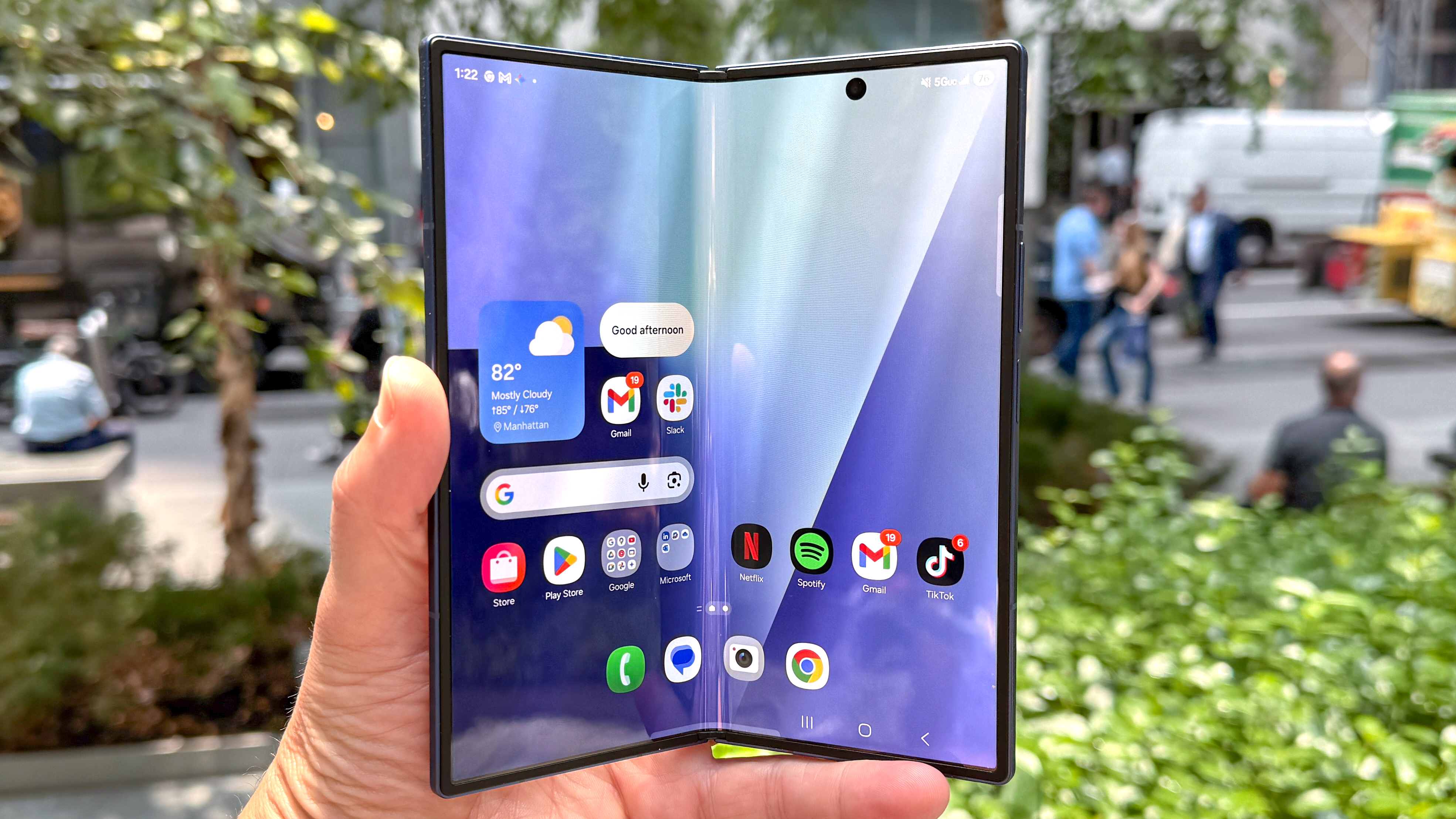
The Galaxy Z Fold runs Samsung’s One UI 8 software on top of Android 16, and there are some notable upgrades for foldable fans.
As mentioned above, Gemini Live is now enhanced with multimodal AI, which means it can process information from your voice and what the camera “sees” in real-time, as well as what’s on your screen.
The Gemini Live interface floats on top of whatever you’re doing, so it doesn’t feel like it’s taking over your phone, and when you’re sharing your screen and talking to Gemini you’ll see an indicator in the top left corner that it’s listening, so you can tap there to pause or turn it off at any time.
Circle to Search gets an upgrade in One UI 8, too. You can use Circle to Search when playing a game and get instant tips or find out more about characters or enemies.
Another AI perk is that you can now drag and drop AI-created content from one window to another when using the multi window feature, including images.
Thanks to its larger screen, there’s a revamped Studio video editor in the gallery that lets you edit videos almost like on a computer. What makes it unique is how it’s laid out, along with the ability to layer tracks much like on professional video editors. For creators, it’s a helpful tool that offers on-device editing to save you time. This is exclusive to the Z Fold 7 for now, as the Z Flip 7 doesn’t have it.
As for Android 16 features, some of the biggest highlights include live updates for ride-share and food delivery apps (which is coming to Samsung’s Now Bar). Another welcome upgrade is grouping notifications from a single app for reducing clutter on your lock screen.
As with other Samsung flagships, the Z Fold 7 comes with seven years of OS and security updates. However, it only comes with 6 months of free Gemini Advanced — whereas Google’s Pixel 9 phones get a full year.
Samsung Galaxy Z Fold 7 review: Verdict
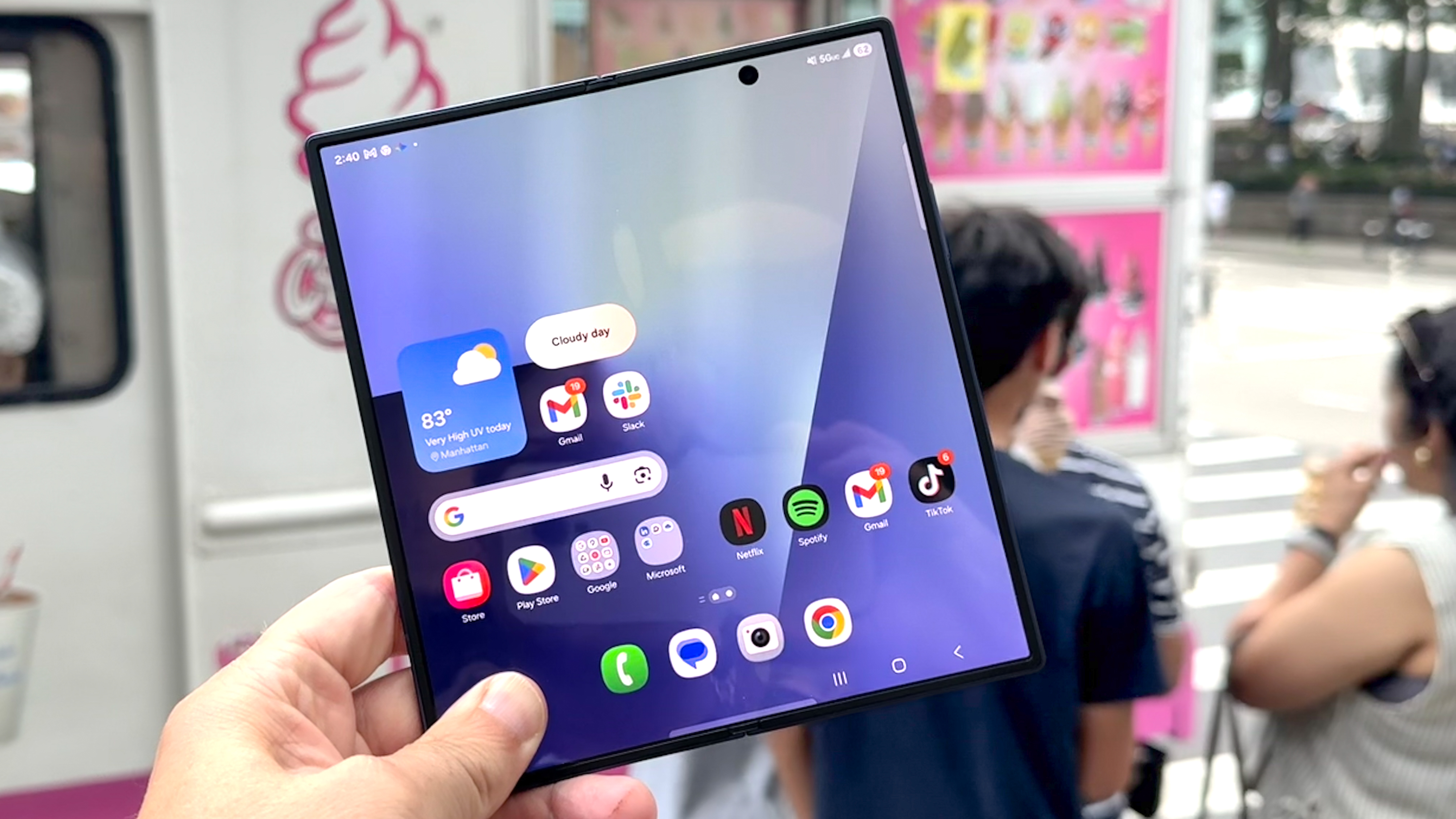
Samsung has done it. They’ve won over a foldable phone skeptic with a design that just feels right.
The Galaxy Z Fold 7 is a triumph of engineering, packing larger displays in a design that’s so thin and light you forget that you’re carrying a foldable around.
You get two vibrant screens in one device, awesome multitasking power and a flagship-grade camera system. And the AI features really shine on this bigger canvas, especially Gemini Live screen sharing.
So what’s the problem? The $2,000 price is super steep, and I wish Samsung found a way to pack in a larger battery. I personally can live without the S Pen, though creatively-inclined users may be peeved, and I really don’t mind the punch hole camera. The megapixel upgrade makes up for it.
I think the Galaxy S25 Ultra is the better option if you want longer battery life, even better cameras and S Pen support for hundreds less. But if you’re even thinking about splurging for a foldable, you’ll be more than happy with the Z Fold 7. It’s the best foldable phone you can buy in the U.S. and maybe the world.
It finally feels like the future we were promised is here.
Mark Spoonauer is the global editor in chief of Tom's Guide and has covered technology for over 20 years. In addition to overseeing the direction of Tom's Guide, Mark specializes in covering all things mobile, having reviewed dozens of smartphones and other gadgets. He has spoken at key industry events and appears regularly on TV to discuss the latest trends, including Cheddar, Fox Business and other outlets. Mark was previously editor in chief of Laptop Mag, and his work has appeared in Wired, Popular Science and Inc. Follow him on Twitter at @mspoonauer.
You must confirm your public display name before commenting
Please logout and then login again, you will then be prompted to enter your display name.
